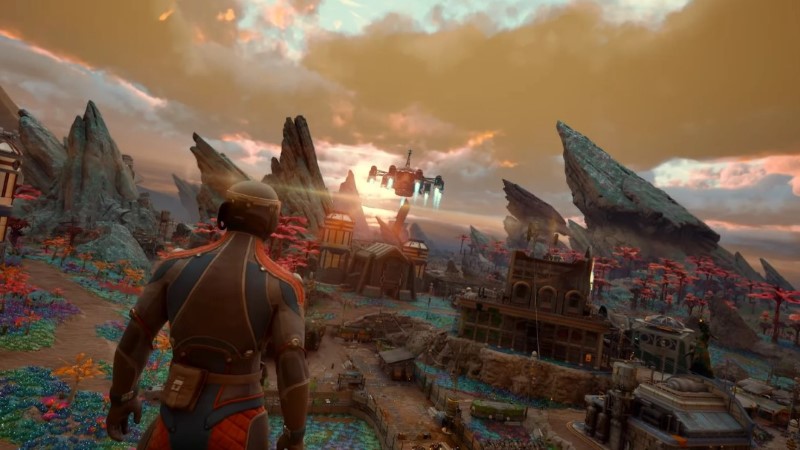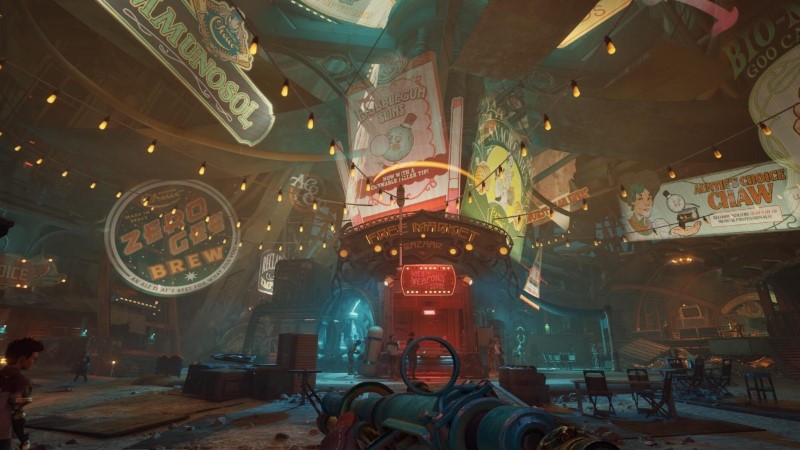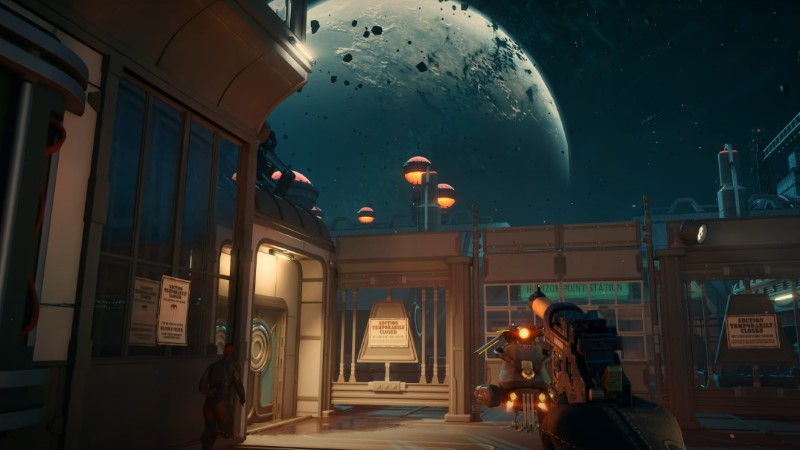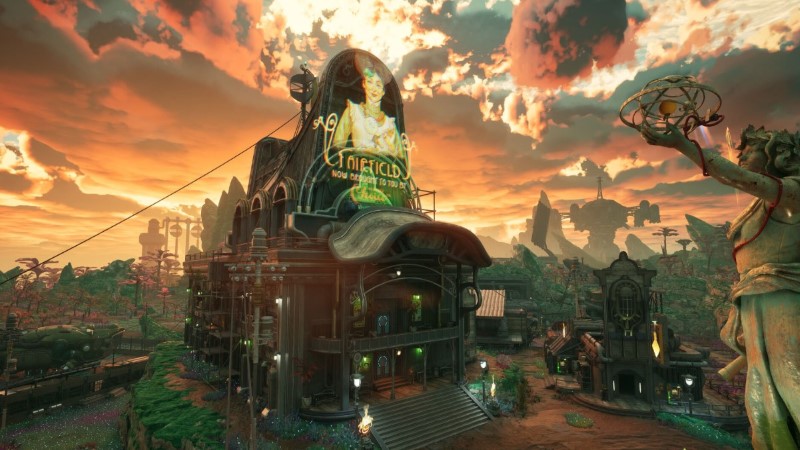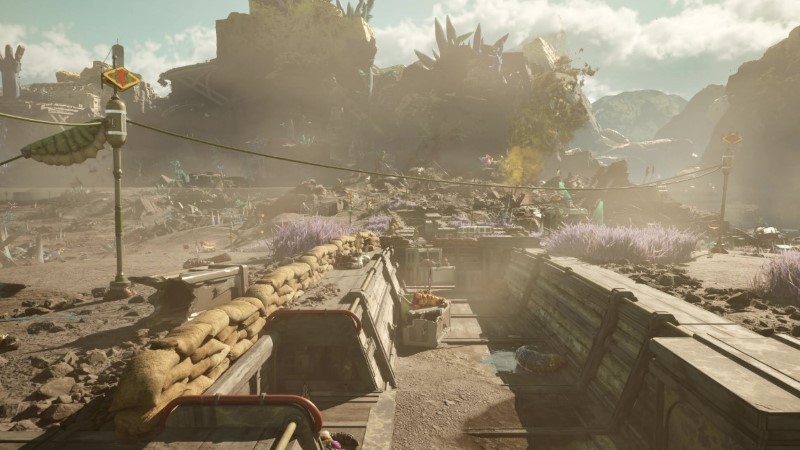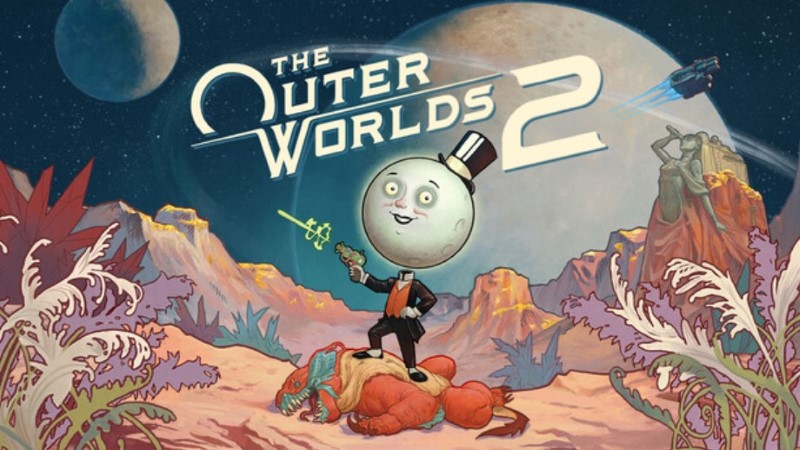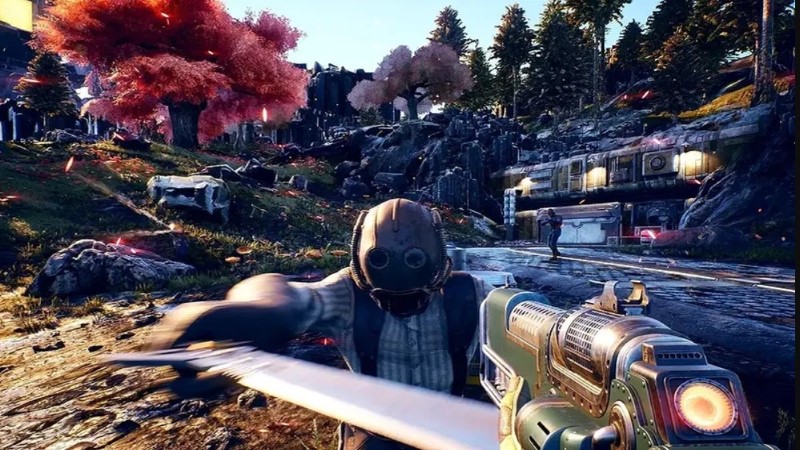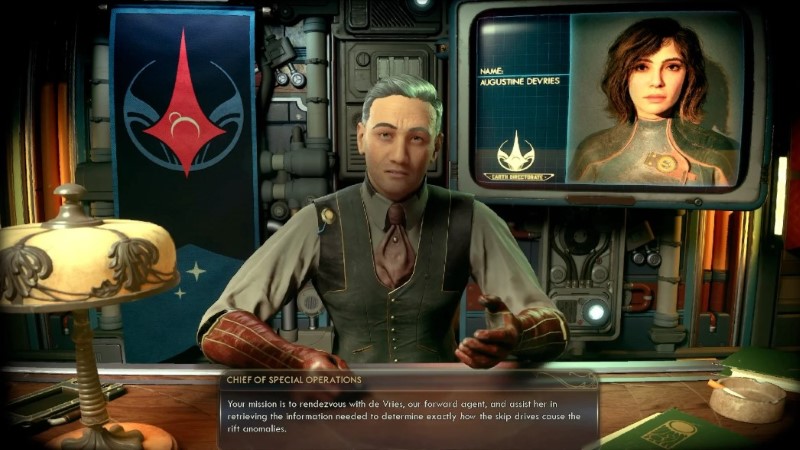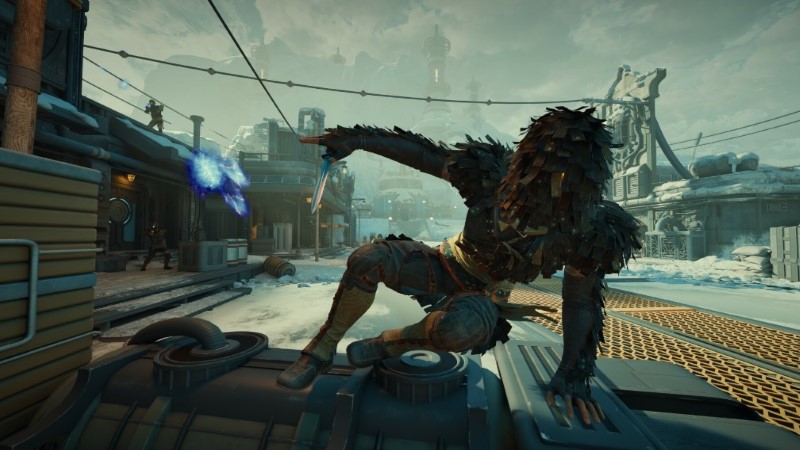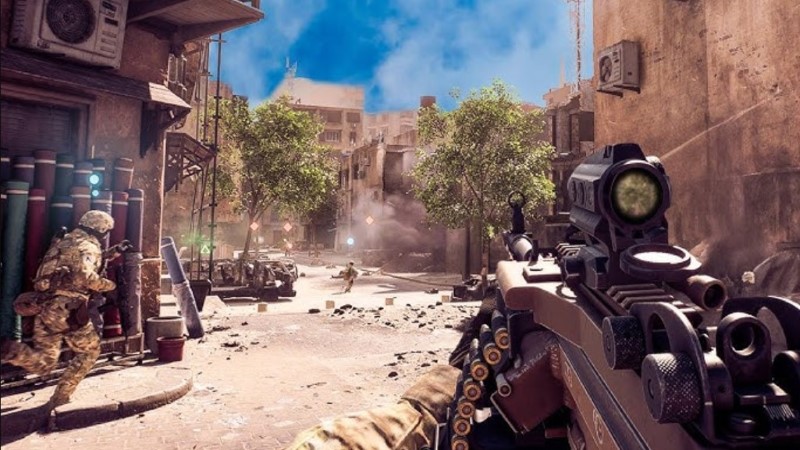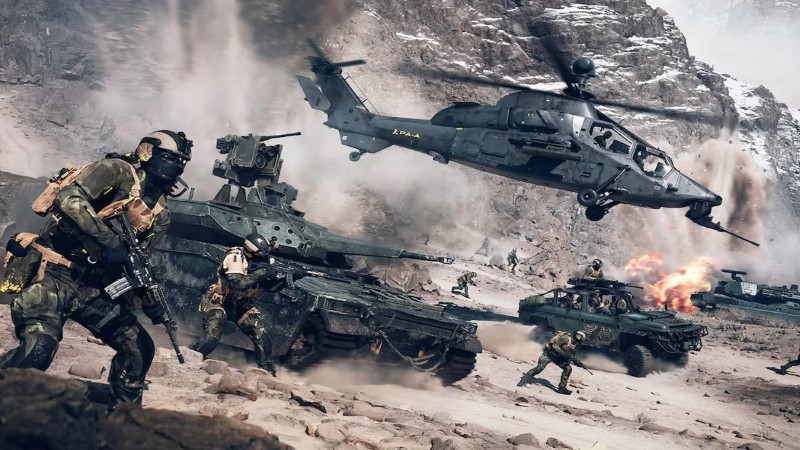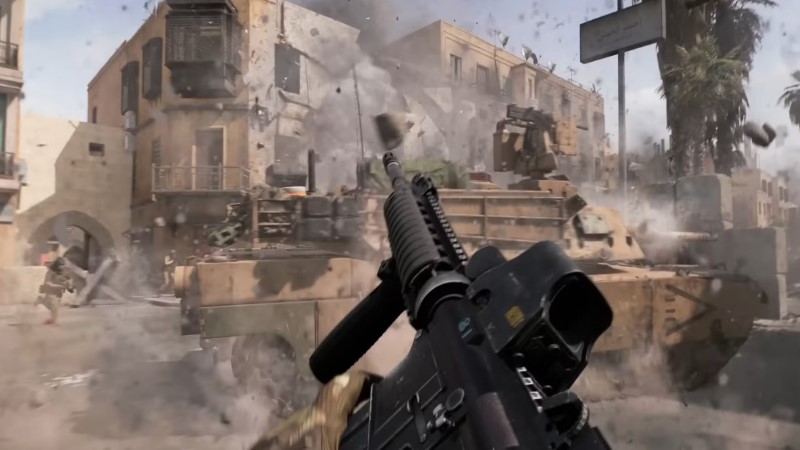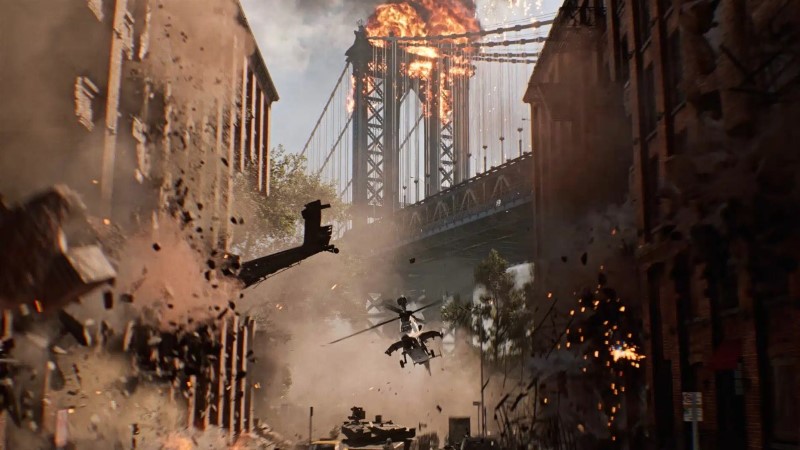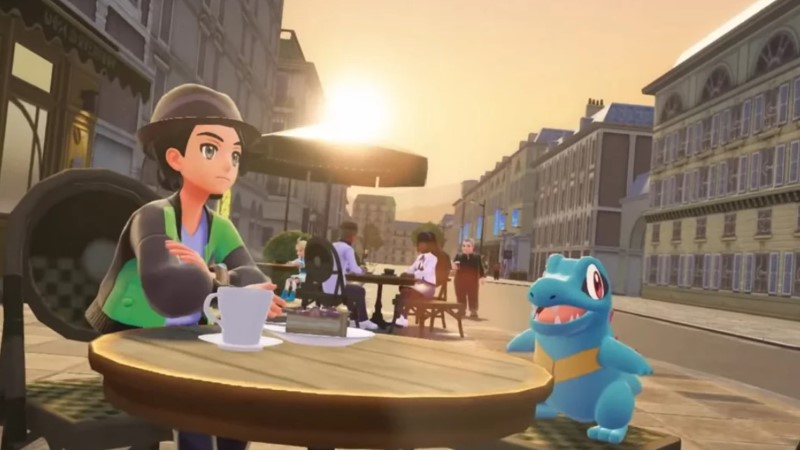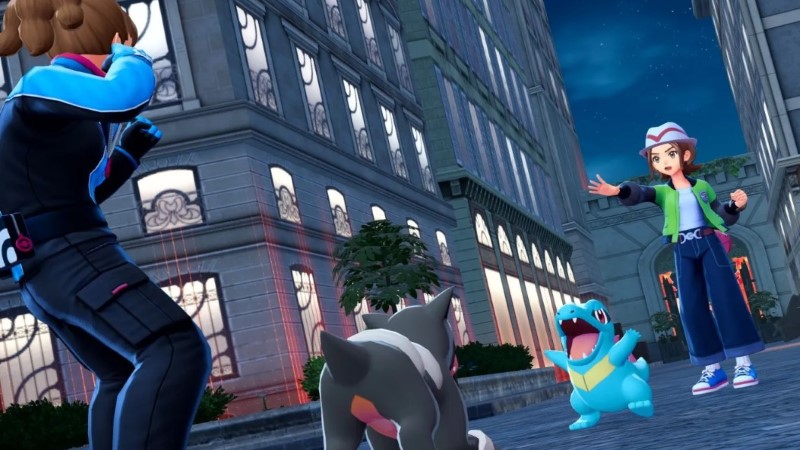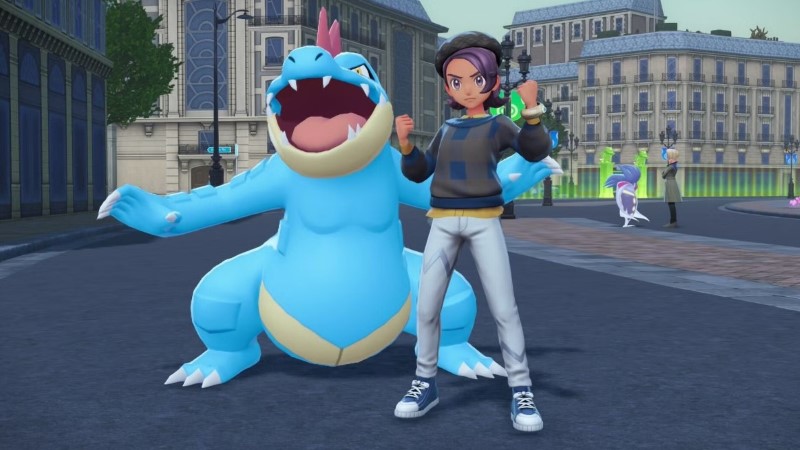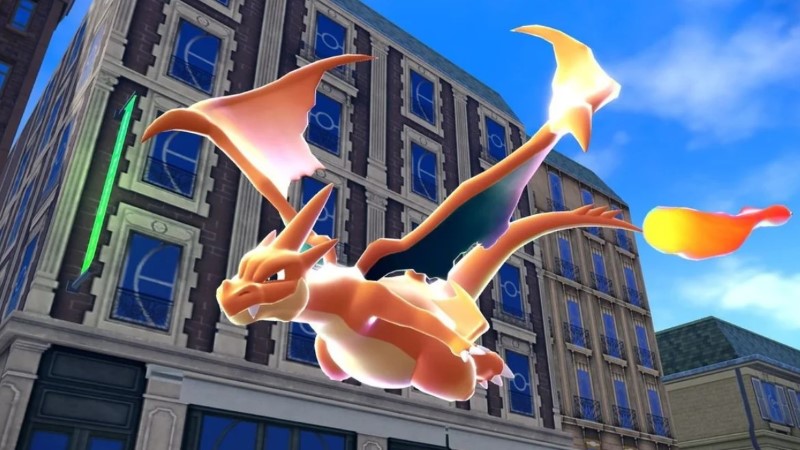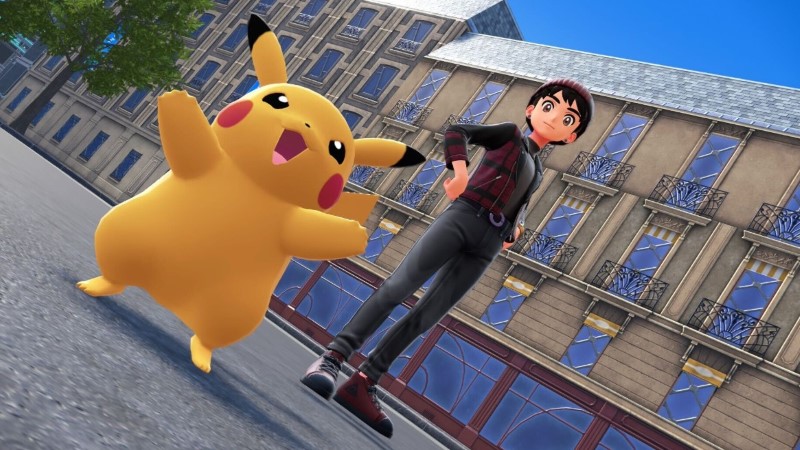Games & Tech
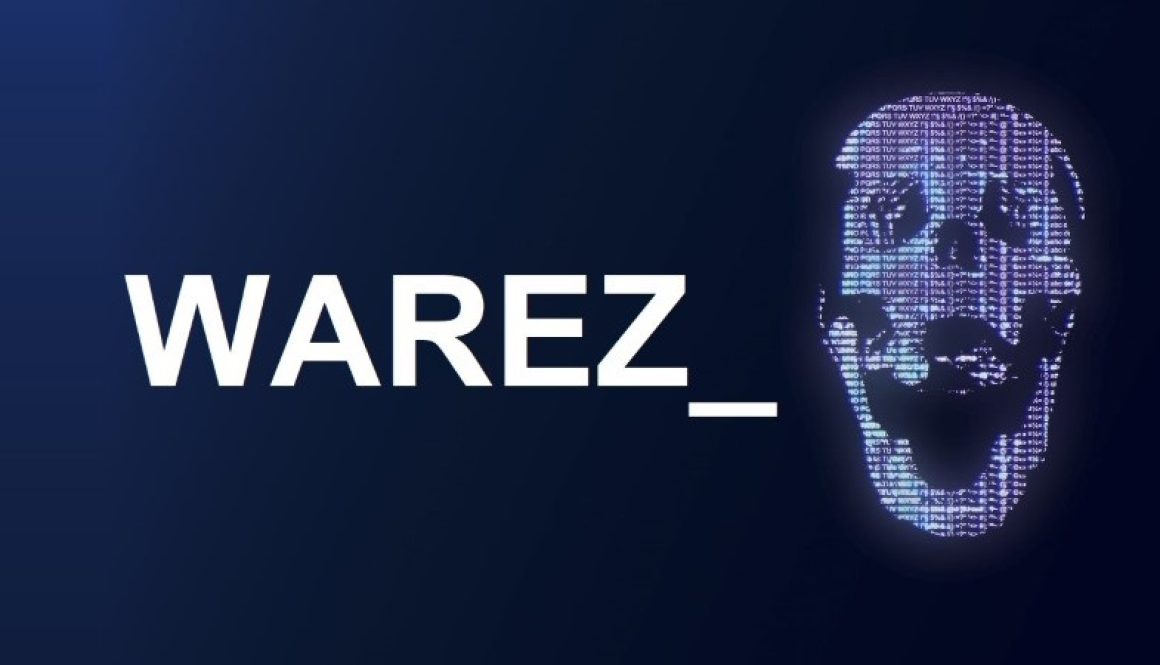
Razor1911, Skidrow, Fairlight: The Rise and Legacy of Warez Groups
Note: This overview is intended strictly for informational and educational purposes only.
If you were online during the 1990s or early-to-mid 2000s, chances are you either stumbled upon or heard about mysterious “warez groups.”
To the average internet user, these were simply the people who cracked games and software, making them available for download on bulletin boards, IRC channels, early peer-to-peer networks, and eventually torrent sites.
But to those who paid attention, warez groups represented an entire underground ecosystem rooted in competition, technical skill, and a surprising sense of “honor among pirates.”
This article takes a historical look at what warez groups were, how they began, the major players like Razor1911, RELOADED, Deviance, FairLight, PARADOX, SKIDROW, CPY, HOODLUM, and others, how they shaped online culture in the 90s and 2000s, and where many of them stand today.
What Exactly Were Warez Groups?
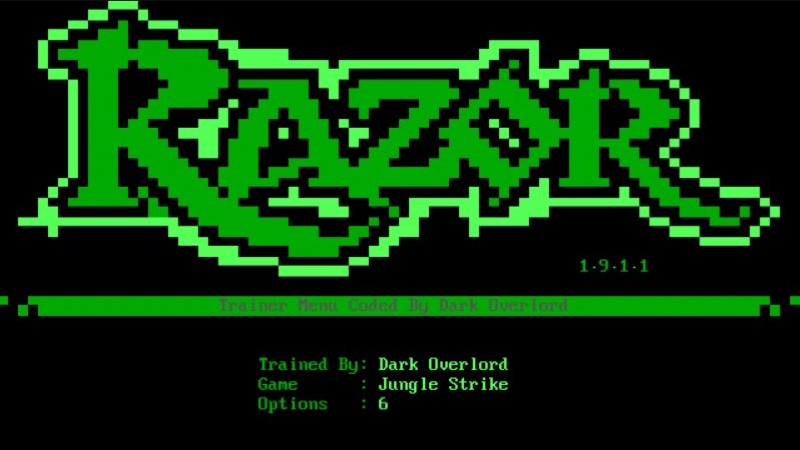
Warez groups were organized teams of individuals who specialized in obtaining commercial software, removing or bypassing copy-protection measures, and then repackaging and releasing the “cracked” versions online.
Their work most often revolved around PC games, but many also dealt with operating systems, productivity suites, movies, and console software.
Contrary to the assumption that these groups operated for financial gain, traditional warez culture strongly discouraged profit.
The motivation was largely driven by skill, reputation, and the thrill of beating the latest digital protection. Being the first group to crack a newly released AAA game or software title was a badge of honor. Groups kept score, and competition was fierce.
The Beginnings: 1980s and Early 1990s
The roots of the warez scene can be traced back to the 1980s, long before broadband internet existed. Early enthusiasts traded copied Commodore 64, Amiga, and PC games using floppy disks and dial-up Bulletin Board Systems (BBSes). Groups like The Humble Guys (THG), Quartex, and FairLight emerged as pioneers of the scene.
They would remove copy-protection from games and attach small digital “calling cards” in the form of cracktros; short animated intros that displayed their group name, digital art, chiptune-style music, and member credits.
By the early 1990s, the scene had become more structured. It operated with unwritten rules, a hierarchical lineup of roles (crackers, suppliers, couriers, testers, sysops), and a strong code of secrecy. Internal leaks or behavior seen as disrespectful to the scene could result in a group being banned or losing standing.
Late 1990s Through the 2000s
The late 90s and early 2000s are what most people consider the golden age of warez culture. As internet adoption soared and broadband became more common, releases spread faster than ever before.
File-sharing networks like Napster, eDonkey, Kazaa, and later BitTorrent helped propel warez releases to mainstream awareness.
Names like Razor1911, RELOADED, Deviance, FairLight, CLASS, PARADOX, iSO, HOODLUM, SKIDROW, Myth, VACE, DEViANCE, and later CPY, became legendary to many online users.
Razor1911, founded in 1985, became one of the most recognized names in the cracking world. Their iconic ASCII NFO files, which accompanied releases, were nearly as famous as the games themselves.
Razor1911 became closely associated with the PC game cracking scene throughout the 90s and 2000s, although they faced setbacks and re-emerged multiple times after law-enforcement operations targeted scene groups.
RELOADED, often stylized as RLD, gained massive notoriety in the 2000s for consistently high-quality and reliable game cracks. While some groups rushed releases that resulted in bugs or instability, RELOADED prided themselves on polished work. This reputation helped them become widely trusted among those who sought pirated games at the time.
Deviance was another standout group during the early 2000s. Known for their competitive nature and occasionally provocative NFO writeups, they were highly active and respected for fast releases and technically solid cracks. Deviance eventually faded from the scene, but their mark on warez history remains strong.
FairLight, one of the oldest groups still known today, began in 1987 and bridged the gap between the demoscene and the warez scene. Their cracktros in particular became admired for their artistic polish, blending technical skill with creativity. FairLight was swept up in major anti-piracy operations yet resurfaced multiple times.
PARADOX became a household name in the PlayStation and console-cracking side of the scene. They were known for cracking games and firmware for systems such as the PlayStation 1, PlayStation 2, and later the PlayStation 3. Their work often made gaming headlines and drew media attention.
SKIDROW later took center stage in the late 2000s and 2010s, especially when PC games began shipping with more aggressive DRM, such as SecuROM and Ubisoft’s online-check DRM. SKIDROW released many prominent cracks during this era and maintained a consistent presence well into the 2010s.
More modern groups like CPY (Conspir4cy) became notorious for defeating notoriously difficult DRM systems such as Denuvo, especially between 2014 and 2020. CPY releases often dominated gaming news sites whenever a major breakthrough was made.
Other groups frequently referenced include HOODLUM, UNLEASHED, DARKSiDERS, PLAZA, TiNYiSO, XFORCE, BAHAMUT, TNT, and ISO groups too numerous to list.
Why the Scene Captured the Imagination of a Generation
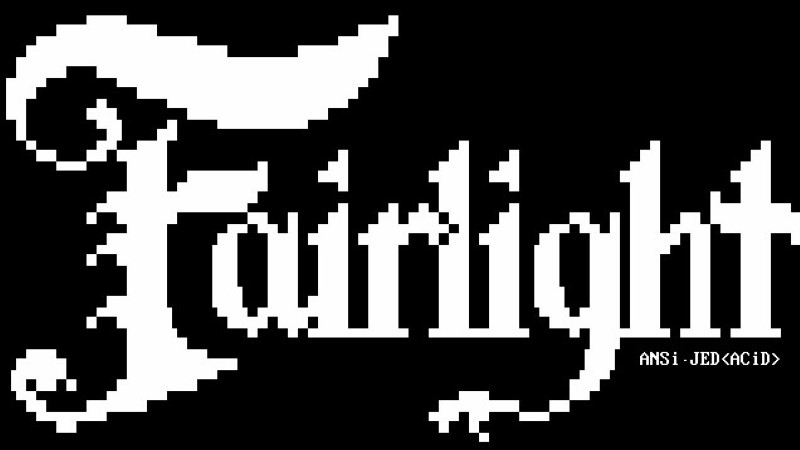
For many people growing up online in those years, warez groups became icons of a digital counterculture.
Before the era of streaming and widespread digital ownership, video games were expensive and sometimes geographically restricted. Warez groups, intentionally or not, provided access to people who otherwise had no way of playing certain titles.
Their releases also had a unique aesthetic. Cracktros, ANSI and ASCII artwork in NFO files, clever “installer jokes,” and internal rivalries gave the scene an identity that felt almost like a secret society.
While piracy itself was illegal, the cultural footprint of these groups helped spark discussions around digital rights, DRM, consumer access, and software preservation.
Law Enforcement Crackdowns
As the warez scene grew, it increasingly caught the attention of global authorities and corporate anti-piracy units.
The early 2000s saw major international operations designed to cripple scene groups. Operations such as Operation Buccaneer (beginning in 2001), Operation Fastlink (2004), and Operation Site Down (2005) led to high-profile raids, arrests, and the shutdown of servers.
Groups like DrinkOrDie, Razor1911, FairLight, and others were directly impacted during these crackdowns.
While these law-enforcement efforts did significant damage, the scene never fully disappeared. It adapted, decentralized, grew more private, and became far more cautious.
Where Are They Now?
Today, classic warez groups do still exist, but their activity is not as public or as frequent as in the past. Some operate quietly in the background, while others have gone dormant, faded out, or disbanded entirely.
Razor1911 has resurfaced multiple times over the years and continues to appear sporadically with new releases.
FairLight has also re-emerged periodically and remains a respected, if less active, presence.
RELOADED, once one of the most dominant groups of the 2000s, has somewhat faded from the scene. However, it’s been reported they were working with BTCR as of 2022.
Deviance has long been inactive.
SKIDROW still appears from time to time, though far less prominently than before.
CPY made headlines in the late 2010s for consistently breaking Denuvo, but has been quiet more recently. PARADOX was thrust into the news again in 2020 due to high-profile arrests linked to the group.
The nature of the modern scene has changed. Warez groups today operate far more privately, avoid the flashy cracktros that once defined the culture, and rarely interact with the public.
The digital ecosystem and the rise of legal distribution platforms like Steam, GOG, Epic Games Store, and Game Pass have also changed user habits, reducing the mainstream presence of warez culture.
The Cultural Legacy of Warez Groups
No matter one’s position on piracy, it is impossible to deny the impact warez groups had on internet culture.
They pushed digital rights protection to evolve, influenced cybersecurity research, preserved software that might otherwise be lost, and introduced a subculture that merged artistry, rebellion, and technical excellence.
Warez groups were a product of their time, shaping the online experience of countless users during the 90s and 2000s. For many, they will always represent a distinct era of the internet, when the web felt smaller, more mysterious, and full of hidden backdoors for those curious enough to search.
Their legacy remains a fascinating chapter in the history of digital culture. A legacy that reveals how technology, culture, and underground communities often grow hand in hand
Again, this article is meant strictly for educational and journalistic purposes.
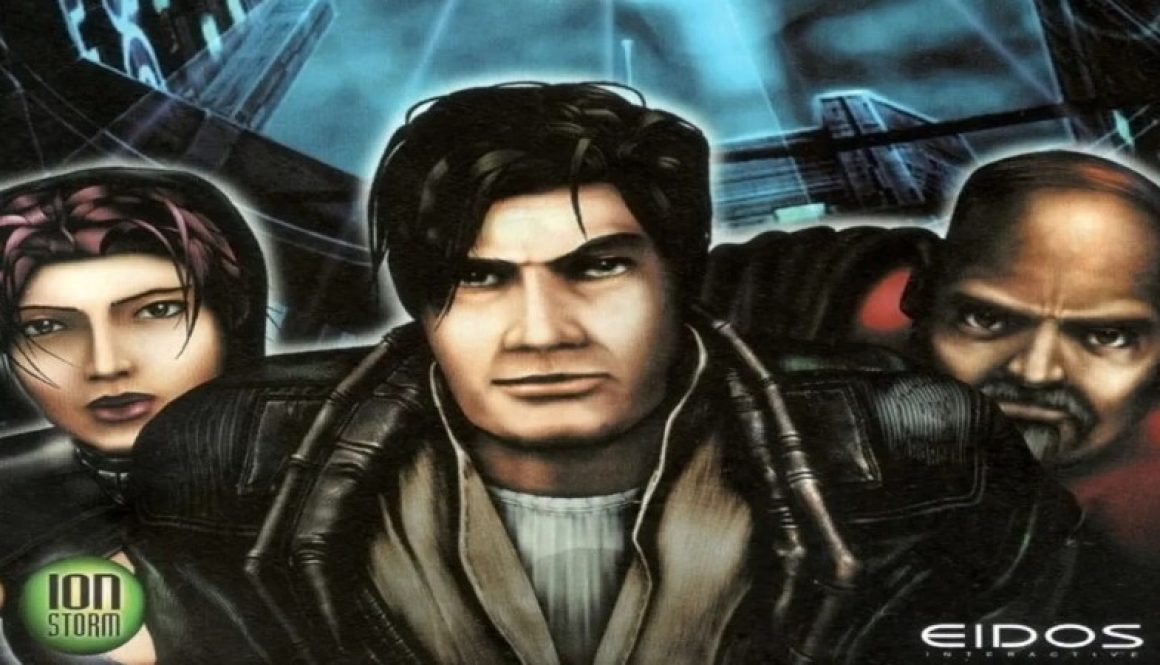
Anachronox: Has Anyone Played this Buggy 2001 Masterpiece?
I’ve always had a soft spot for games that try to do too much, bite off way more than they can chew, and somehow still leave bite marks on the genre. Anachronox is that kind of game.
Released on PC in June 2001, it’s a sci-fi, film-noir, comedy-laced, JRPG-style adventure from Ion Storm Dallas, built on a heavily modified Quake II engine. It launched buggy, sold modestly, and came from a studio swirling in drama…yet it’s one of the most memorable RPGs I’ve ever played.
What the game is actually about (and why its cast is still memorable)
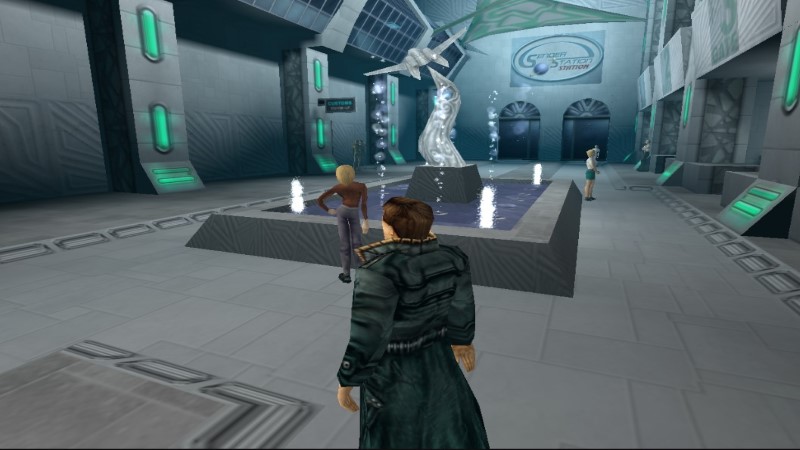
You play Sylvester “Sly Boots” Bucelli, a private eye on the scarred, seedy planet-city of Anachronox. He’s joined by a sarcastic childhood robot buddy (PAL-18), a grumpy scholar (Grumpos), a disgraced scientist (Dr. Rho Bowman), and (because Anachronox never met a big swing it didn’t like) an entire miniaturized planet called Democratus that somehow joins your party.
If that last bit made you grin, that’s the game in a nutshell: big ideas delivered with deadpan confidence. The plot ping-pongs from noir errands and mob feuds to galaxy-threatening mysteries tied to ancient “MysTech” artifacts, with sharp, funny dialogue and surprisingly heartfelt moments.
Mechanically, it wears its JRPG inspirations on its sleeve: turn-based battles, party skills for light puzzling, and hub-to-hub exploration but reimagined for a 3D PC space. The Quake II tech wasn’t just a renderer; Ion Storm hacked in cinematic camera work, expressive faces, and effects to make a “console-style” experience feel at home on a mouse and keyboard.
I’d argue Anachronox is still one of the cleanest translations of JRPG sensibilities to PC RPG culture in that era. Contemporary critics noticed the same thing, repeatedly comparing it to Final Fantasy while praising the story, humor, and character writing.
My take: the game’s tone is the secret sauce. It shifts from silly (Boots moonlighting as a dancer to make rent) to somber without whiplash, using humor to make the bigger cosmic turns land harder. When people say “great writing” in games, this is what they mean: voices you can hear in your head years later, and a world that lets both pathos and punchlines breathe.
The troubled road to release (and why the context matters)
Anachronox was in development for years, as it was originally targeted for 1998 but shipping in June 2001, and it lived inside the most public studio soap opera of its time. Ion Storm was founded by John Romero and Tom Hall, raised funding from Eidos, and split into Dallas (Daikatana, Dominion, Anachronox) and Austin (Deus Ex).
After Daikatana cratered, the Dallas studio became a punchline, and Anachronox had to find its footing under that cloud.
The team crunched brutally in 2000–2001 (12–16 hour days weren’t unusual), wrestling a shooter engine into a cinematic, turn-based RPG and running weekly “bug meetings” where new defects ballooned faster than the old ones could be squashed.
Even then, they got it out the door in late June 2001. Two weeks later, Eidos shuttered Ion Storm Dallas. The Anachronox crew stuck around unpaid to finish a patch. If you’ve ever wondered how “cult favorite with rough edges” happens…well, that’s how.
The buggy launch and the patchwork that followed
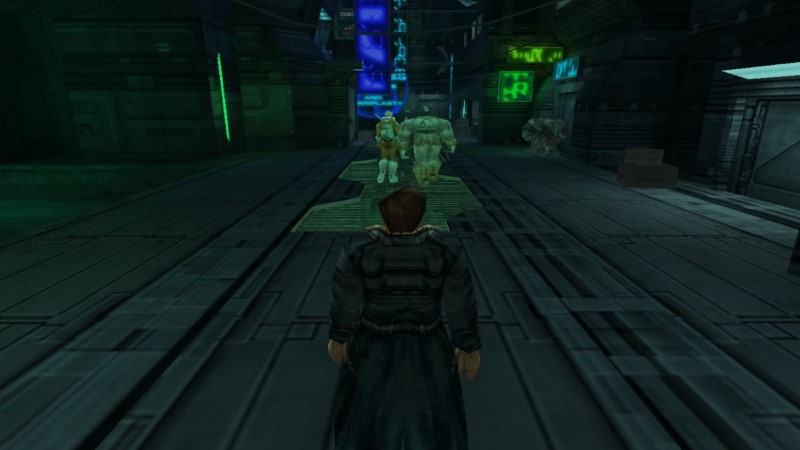
Day-one Anachronox was a paradox: critically praised but technically messy. GameSpot called it a “solid addition” and noted an early patch fixed “most” issues but highlighted Windows 2000 headaches; other reviewers loved the story but winced at the bugs.
Over the next few years, an official patch (1.01), then semi-official updates by programmer Joey Liaw, and finally an unofficial fan patch smoothed many of the worst problems: an early case study in community triage for a game that deserved better support than a closing studio could give.
My take: the roughness stung, but the writing and staging were so strong that I minded less than I should have. Once patched, the game’s charm shines through; the difference between a fascinating near-miss and a classic you want to evangelize. (Plenty of players and critics clearly felt that way, too).
Sales, reception, and the “best game no one played” problem
Commercially, Anachronox underperformed. By the end of 2001, North American sales were around 20,000 units, with some later tallies putting the early run closer to 40,000, which was tiny for a project this ambitious.
Yet reviews were broadly positive, and the game even popped up in PC Gamer’s Top 100 lists in later years. This is the weird duality of Anachronox: a game warmly received by those who found it, but drowned out by timing, minimal marketing, and studio turbulence.
How it helped (and quietly challenged) PC RPGs
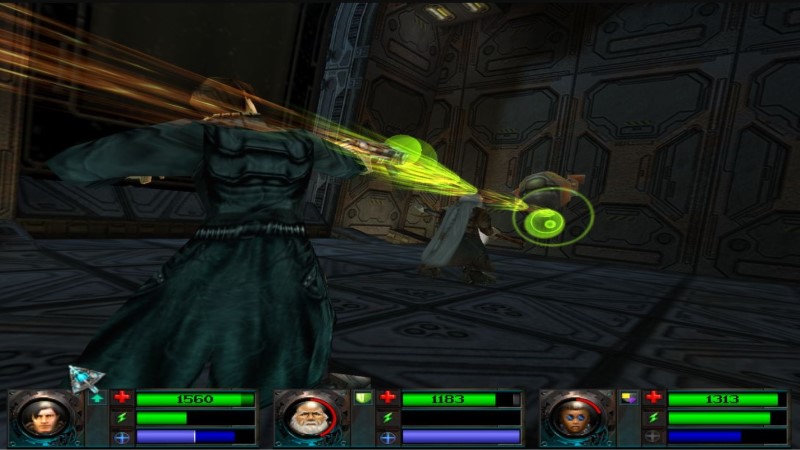
Was Anachronox a commercial blueprint for PC RPGs? No. But in design terms, it was quietly influential:
- JRPG structure, PC comfort: It made a party-based, turn-based, story-first formula feel natural on PC without asking players to compromise on camera control, exploration, or interface. That sounds obvious now; it wasn’t in 2001.
- Cinematic staging in a shooter engine: Using Quake II to deliver elaborate cutscenes and camera language mattered. It showed that you could achieve theatrical storytelling without building bespoke tech from scratch, which was huge for mid-sized PC teams at the time. )
- Tone as a design pillar: The balance of melancholy sci-fi, noir grime, and straight-faced absurdity (again: a planet in your party) broadened what “serious” PC RPGs could feel like. Critics repeatedly singled out the humor and dialogue as defining features.
My take: Anachronox didn’t reshape the market, but it did expand the creative vocabulary of PC RPGs. When later games got bolder with cinematic cameras, authorial voice, or cross-pollination with console traditions, I always thought, “Yeah, Anachronox walked some of this road.”
The legacy: a cult classic that refused to vanish
If you only know one postscript, know this: Anachronox’s cutscenes were stitched into a feature-length film titled Anachronox: The Movie and it won top awards at the 2002 Machinima Film Festival. That wasn’t common back then; it validated how strong the game’s staging and writing were, even removed from the interactive bits.
On the studio side, Dallas closed days after launch, and both John Romero and Tom Hall parted ways at that time. What survived wasn’t a franchise (though Hall wanted a sequel) but a reputation; “the brilliant, broken Ion Storm RPG.” Over time, patches and fan love turned that reputation from “broken” to “beloved.” I still see it pop up in “underrated classics” lists, and honestly, it earns the slot.
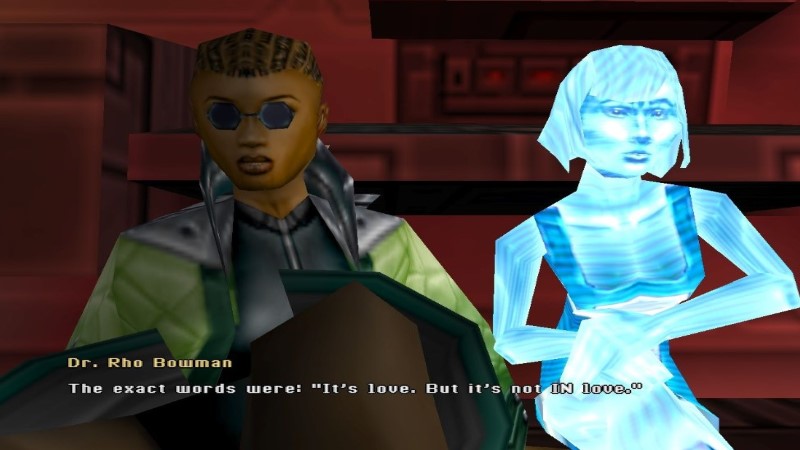
So…should you play it today?
If you can live with 2001 production values and you’re okay applying community patches, yes, a thousand times yes. You’ll get:
- A sprawling, character-driven sci-fi road trip that alternates between hilarious, weird, and unexpectedly tender.
- Turn-based battles that aren’t the deepest ever made but serve the story and pacing well.
- A time capsule of PC-meets-JRPG design that still feels unique, not just “old.”
Personal verdict: Anachronox is messy, ambitious, and utterly singular. In a medium that often rewards safe bets, I’ll take a flawed masterpiece like this any day. It’s the textbook example of a game whose ideas outlived its sales chart, and that’s a legacy worth celebrating.
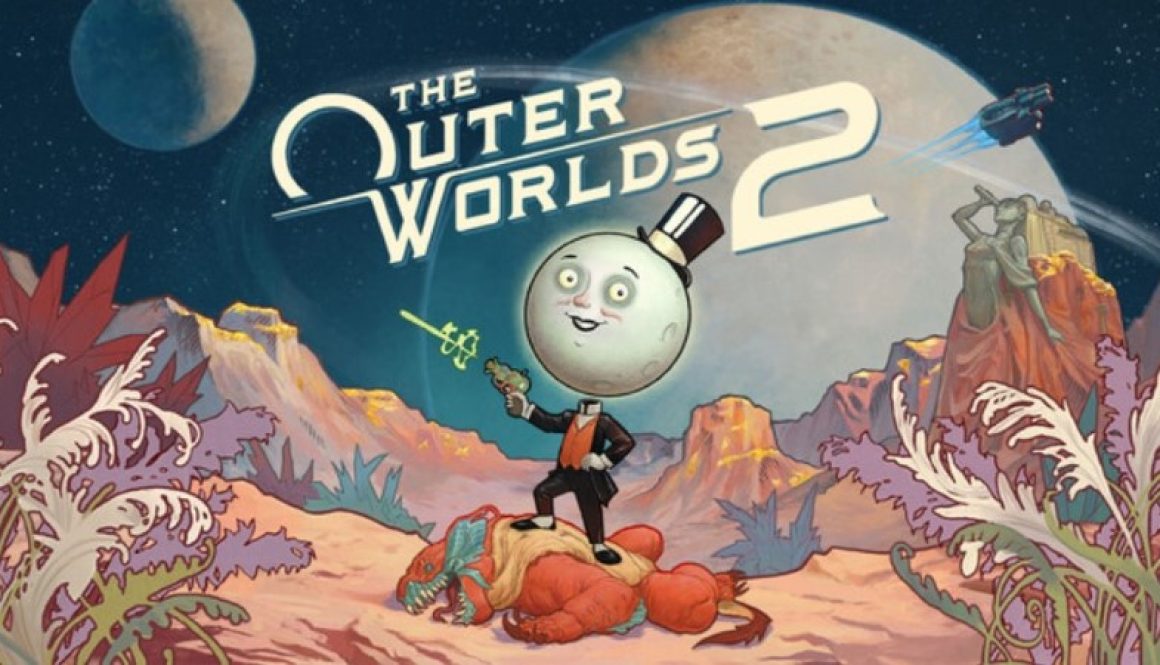
The Outer Worlds 2: Everything to Know About the Sci-Fi RPG Sequel
Quick FAQ: The Outer Worlds 2
Q: Where to download The Outer Worlds 2:
A: You may download The Outer Worlds 2 digitally from Steam, PlayStation Store, and directly into your Xbox Series console.
Q: Do I need to play the first Outer Worlds to understand the second game?
A: Not necessarily. The Outer Worlds 2 features a new star system, new crew, and an independent storyline. Playing the first game will enhance your understanding of the universe and humor, but it’s not required.
Q: Who developed The Outer Worlds 2?
A: The game was developed by Obsidian Entertainment, the same studio behind the original The Outer Worlds, Fallout: New Vegas, and Avowed.
Q: How long does The Outer Worlds 2 take to beat?
A: Based on the first game, the average player can expect 15–20 hours for the main story, and 25–35 hours for completionists, depending on side quests and exploration.
Q: What platforms is The Outer Worlds 2 available on?
A: Confirmed platforms include Xbox Series X|S, PlaySTation 5, and Windows PC.
Q: Is The Outer Wolrds 2 available on Game Pass?
A: The Outer Worlds 2 is a day-one Xbox Game Pass title (such as Game Pass Ultimate, as well as PC Game Pass)..
Q: Do my choices in The Outer Worlds 1 affect the sequel?
A: No. The sequel features a new cast, new setting, and standalone story, so previous save files will not carry over.
Q: Does The Outer Worlds 2 support character creation again?
A: Yes. Like the first game, players can create their own character with customized skills, attributes, and perks.
Q: Outer Worlds 2 minimum PC specs:
Processor: AMD Ryzen 5 2600 / Intel i5-8400
GPU: AMD RX 5700 / Nvidia GTX 1070 / Intel Arc A580
RAM: 16GB RAM
Storage: 110GB of hard drive storage
The Outer Worlds 2 is finally here, and as a huge fan of the original game, I’m thrilled to report that it recaptures and expands upon what made the first Outer Worlds special.
For those unfamiliar, The Outer Worlds (released in 2019) was a surprise hit with a witty, Fallout-style space RPG developed by Obsidian Entertainment. It charmed players with its dark humor, corporate satire, and memorable characters.
Now, with The Outer Worlds 2, Obsidian (led by RPG legends Leonard Boyarsky and Tim Cain, the original Fallout creators) returns to that universe on a bigger scale.
Boyarsky is back in the director’s chair, joined by co-director Brandon Adler, while Tim Cain consulted on the project. In short, the sequel comes from the same creative minds, but with the backing of Xbox Game Studios this time around. And you can really feel that extra polish and ambition in the final product.
I still remember the cheeky announcement trailer at E3 2021 as it hilariously broke the fourth wall, joking that the developers had “nothing to show yet” except a title. That self-aware humor set the tone perfectly. Fast-forward to now (late 2025), and The Outer Worlds 2 has launched on PC, PS5, and Xbox Series X/S.
As someone who adored the first game’s blend of space-western adventure and snarky comedy, I went into the sequel both excited and a tad anxious. Would it live up to The Outer Worlds 1? Let’s just say: Obsidian didn’t let us down.
In this blog post, I’ll break down everything you need to know about The Outer Worlds 2: from its story and characters to the gameplay changes and how it sets itself apart from the beloved original.
So grab some Saltuna (it’s Spacer’s Choice™!) and let’s dive in.
A New Frontier: Story and Setting in The Outer Worlds 2
The Outer Worlds 2 takes place in the same universe as the first game but in an entirely new star system, giving us a fresh story that newcomers can jump into without needing to have finished the original.
The first Outer Worlds was set in the Halcyon colony and centered on a colony ship and corporate conspiracies. This time, we’re headed to the Arcadia Colony, a distant and wealthy star system that has been cut off from Earth. The premise immediately hooked me: you play as an Earth Directorate agent sent to Arcadia to investigate mysterious space-time rifts that are tearing the colony apart.
These rifts are basically catastrophic anomalies punching holes in reality. So, not exactly a routine assignment for our “most likely good-looking” protagonist (as the game’s own tongue-in-cheek description calls you).
Arcadia might be a new locale, but it retains that Outer Worlds flavor of a retro-futuristic, hyper-capitalist dystopia. The series’ alternate history lore is still in effect: mega-corporations run the show because in this timeline, the robber barons were never stopped in the 1900s.
So humanity’s colonies are capitalist nightmares (or dreams, if you ask the CEOs) full of neon advertisements, cheesy propaganda, and absurd sci-fi technology. In Arcadia, the central conflict revolves around factions vying for power amid the chaos of the rifts. On one side, there’s The Protectorate, a totalitarian government that monopolizes faster-than-light travel and claims to benevolently “protect” the colony.
Opposing them is Auntie’s Choice, a megacorporation formed by the merger of two big companies from game one: Auntie Cleo’s (a pharma company) and Spacer’s Choice (think Walmart in space, known for its grinning moon mascot).
Auntie’s Choice basically launches a corporate invasion of Arcadia, looking to break the Protectorate’s control over FTL travel and seize those lucrative trade routes for themselves.
Caught in between is a fanatical religious faction known simply as The Order, which has its own secretive agenda regarding the rifts and the colony’s future. And let’s not forget a fringe cult called The Glorious Dawn who worship these rifts as divine phenomena.
Basically, Arcadia is a powder keg of competing interests, and you’re dropping right into the middle of it. Lucky you.
As an agent of the Earth Directorate, you’re technically there as a neutral intermediary (Earth’s government wants to know why Arcadia has gone radio-silent). But in classic RPG fashion, neutrality is tough to maintain. The story quickly forces you to navigate this web of corporate greed, authoritarian control, and zealous rebellion.
I won’t spoil major plot points, but expect plenty of tough decisions about which factions to side with (if any). The Outer Worlds 2 continues the series’ tradition of branching narratives and player choice.
Depending on who you ally with (be it the oppressive Protectorate regime, the scheming Auntie’s Choice execs, or perhaps a third path like supporting the Order’s cause) the ending and the fate of Arcadia will change.
I always appreciate when my choices meaningfully impact the world, and by all accounts this sequel doubles down on that aspect. In my playthrough so far, I’ve already seen the colony react to my actions; one faction tried to assassinate me after I betrayed them in a quest. It’s thrilling to feel like the decisions I make (and even the distractions I pursue) can ripple into big consequences.
Tonally, The Outer Worlds 2 manages to balance high stakes with irreverent humor. The main storyline, which involves investigating reality-bending rifts and preventing galactic destruction, is actually a bit grander and more serious than the original game’s plot. There’s an undercurrent of political intrigue and sci-fi mystery that feels more urgent this time around.
Early on, there’s almost a Mass Effect vibe as you race to figure out what (or who) is causing these rifts before everything falls apart. Yet, in true Outer Worlds fashion, the game never becomes too grim. Dark, sarcastic comedy is embedded in every corporate training video, NPC dialogue, and quest description. I’ve chuckled at the satirical advertisements plastered around
Arcadia’s cities, and even during tense moments characters will drop a well-timed joke. This franchise has always been great at skewering corporate culture and excess, and that continues here.
One minute you’re contemplating the morality of siding with a repressive government, the next you’re laughing at a hapless guard complaining about their substandard Spacer’s Choice ammunition (“it’s not the best choice, it’s Spacer’s Choice!”).
The mixture of drama and comedy feels very Outer Worlds, and it’s nice to see that the sequel didn’t lose that identity even as it introduces a bigger story.
Meet the New Crew: Characters & Companions in Arcadia
The Outer Worlds 2 introduces a brand-new cast of characters to accompany you on your space-faring adventure, and they are a colorful bunch, to say the least. Fans of the first game might be wondering: can anyone live up to companions like Parvati, the adorable and brilliant mechanic from Outer Worlds 1?
The answer is, the new crew certainly tries, and they bring plenty of personality (and opinions) to the table. In total, there are six recruitable companions in Outer Worlds 2, each hailing from a different faction or walk of life in Arcadia.
This diversity isn’t just for show; it leads to some spicy inter-party banter and even conflicts. In fact, Obsidian really leaned into the idea that your companions have their own agendas; if you make choices that clash too hard with a companion’s beliefs, they can turn on you or even leave.
No kidding, the stakes in your crew relationships are higher now, which makes role-playing your ethos even more engaging (and a bit nerve-wracking if you hate to disappoint your virtual friends!).
Let me introduce a few of these misfits (minor early-game character spoilers ahead). First up is Niles, your fellow Earth Directorate agent and the first companion you’ll meet. Niles is a likable, somewhat grizzled gunslinger with a strong moral core, given that he joined the Directorate to help the downtrodden.
In practice, that means he’s not a fan of either the corrupt corporations or the authoritarian Protectorate. He’s basically your classic good-guy cowboy, always ready to stick up for the little people. I found Niles to be a comforting presence in the early hours; he’s the closest thing to having a buddy cop partner on this mission, and he often chimes in with a weary joke or a word of advice.
Gameplay-wise, Niles has a handy ability to taunt enemies and draw fire (he challenges foes then unloads three shots into them). This makes him a great tank, which saved my hide during tougher fights.
Alongside Niles, you’ll also quickly acquire V.A.L.E.R.I.E (or just Valerie for short), who is an Automech (a robot) working with the Earth Directorate. If you enjoyed ADA (the ship computer) in the first game, Valerie scratches a similar itch: she’s full of dry, robotic wit and occasionally throws out one-liners with a charming beep-boop delivery.
Valerie is more of a support unit in combat; her special move launches a volley of healing syringes at you and your allies. I’ve come to rely on Valerie’s help during messy battles, and I admit I laugh every time this floating droid says something snarky in her calm, computerized tone.
She doesn’t have a huge personality (think of her as a less chatty companion unless spoken to), but she’s dependable and frees you up from having to gobble health pills constantly.
As you venture deeper, you start recruiting companions who represent Arcadia’s native factions. Inez is one such character, an ex-super-soldier from Auntie’s Choice. She has a rather tragic backstory: Inez was part of an experimental “grafting” program to implant extra limbs and abilities in soldiers.
Most of her squad died from the procedure, and Inez herself is left with a tiny, useless arm grafted onto her back (yep, she has an extra little arm sticking out, which is both sad and darkly funny).
Despite being burned by her corporate overlords, Inez remains fiercely loyal to Auntie’s Choice, believing in the company line that the merger will save Arcadia.
This puts her at odds with more anti-corporate teammates like Niles and Tristan (we’ll get to him in a second). Inez doesn’t start with a combat ability due to her “failed” graft, but interestingly, by doing her personal quest, you get to choose a new ability for her, basically determining how she overcomes her flaw.
In my game, I helped Inez track down some monstrous test subjects to avenge her fallen comrades, and the outcome let me pick a powerful new skill for her (either a defensive cloaking/healing trick or an offensive blast, depending on a choice). It’s a neat bit of character development tied into gameplay.
Now, Tristan might be my favorite companion conceptually: he’s an Arbiter for the Protectorate, essentially an elite enforcer who acts as judge, jury, and executioner in that regime. Picture a big armored guy with a hammer, radiating lawful authority…that’s Tristan.
On paper, he sounds scary (and he can be, when he’s smashing enemies with that hammer charge of his), but personality-wise he’s a hoot. Tristan has a strong sense of justice and truly believes in order and law, yet he’s not a one-dimensional zealot. In fact, he’s often confused or disillusioned by the cruelty and bureaucracy of the Protectorate.
This leads to some genuinely funny moments where Tristan’s rigid “rules are rules” attitude clashes with reality. He’s kind of a lovable oaf in his obliviousness, often delivering unintentionally hilarious deadpan lines.
I didn’t expect a member of the evil empire faction to be comedic relief, but Tristan pulls it off. And despite his allegiance, he’s notably anti-corporation, so he and Inez bicker frequently. I’ve had to play peacekeeper on my ship more than once. It creates an almost sitcom-like dynamic onboard, and I’m here for it.
Rounding out the crew, we have two more complex characters: Marisol and Aza. Marisol is an older woman you encounter under false pretenses; she initially disguises herself during a quest, and it’s possible to miss recruiting her (or even kill her by accident) if you don’t play your cards right. If you do recruit her, you learn Marisol is part of The Order, that religious sect with assassin tendencies.
She’s polite and grandmotherly on the surface, but she has a long history of doing dirty work for her cause. I’ve found Marisol intriguingly two-faced; one moment she’s offering you homemade cookies (seriously), the next she’s coolly discussing the most efficient way to eliminate a target in the name of the “grand plan.” She’s not as gleefully bloodthirsty as the next companion I’ll mention, but Marisol is definitely one of those “sweet old lady who will 100% stab you if needed” characters.
Her companion ability is extremely powerful for strategic players: she can immobilize an enemy with a gadget, essentially freezing a target in place and making all hits on them crits. It’s ridiculously useful against boss enemies or tough creatures, especially if you like to combo for big damage.
Finally, there’s Aza, who is probably the most extreme personality of the lot. Aza is a member of The Glorious Dawn cult, the folks who worship the rifts. To put it bluntly, Aza is a sadist; she loves inflicting pain and violence, and she’s quite unapologetic about it. However, she’s not your typical mindless psycho; Aza has a code of sorts.
In her view, if you’re going to be evil or violent, you should do it “properly” and with style. Her dark, deadpan humor actually made me warm up to her (in a “I wouldn’t want to be left alone in a room with this person” kind of way). I recruited Aza by freeing her from a jail cell where she’d been locked up for, well, causing mayhem.
From that moment, she’s been an absolute riot, constantly egging me on to take the more chaotic or cruel approach to situations.
I sometimes take her out on missions just to hear her nihilistic commentary; it’s both disturbing and strangely funny how enthusiastic she gets about combat. Speaking of which, Aza’s ability involves firing an explosive cluster from her wrist gadget, doing big area damage. It even has multiple charges, so she can really wreak havoc in a fight.
She’s a bit of a glass cannon (not super durable), but if you want to unleash carnage, Aza’s your gal. Just… don’t expect a warm and fuzzy friendship with her. I often feel like I’m keeping a volatile weapon as a companion. But hey, it’s effective!
Overall, I’ve been impressed with how distinct each companion is, both in combat utility and in personality. Their interactions add a lot of life to the game. They’ll chime in during conversations and even argue with each other based on my choices.
It keeps me on my toes, knowing that picking a side in a quest might genuinely alienate one of my crew. (I haven’t had anyone outright leave yet, but I’ve heard it can happen if you really push them too far.) One thing to note: there are no romance options with companions, continuing Obsidian’s trend from the first game. Personally, I’m fine with that, since the relationships here are more about camaraderie and ideology than smooching.
In fact, some early interviews indicated the devs wanted to focus on deep companion friendship and loyalty quests instead of romantic subplots. And it shows: each companion has a robust personal quest line and lots of dialogue that reveal their backstories. As a story-driven player, I love digging into these arcs.
Whether it’s helping Niles come to terms with a failed mission or encouraging Aza to maybe, just maybe, show mercy once, the companion quests have been highlights for me so far. They also tie into gameplay in cool ways (like Inez’s quest letting you choose her new skill, or Marisol’s recruitment requiring a specific choice).
Compared to the original Outer Worlds, I’d say this new crew stands toe-to-toe in quality. I will admit, I still have a soft spot for Parvati and some of the original companions, as they felt a bit more instantly endearing.
The Outer Worlds 2 companions are perhaps more complex and conflicted, which is great for storytelling even if it means it took me longer to truly “bond” with them. Some critics have noted that a couple of the new companions aren’t as unforgettable as the old gang, but others found them more interesting due to the inter-faction drama they bring. From my perspective, by the time I’d spent several hours with each, I was invested.
And the banter is top-notch; I’ve laughed out loud hearing Valerie the robot sass Aza about her “inefficient bloodlust,” or Tristan trying to understand a crude joke Niles made. If you play these games for the party interactions (like I do), you won’t be disappointed.
Gameplay Evolution: What’s New (and Improved) in The Outer Worlds 2
While the story and characters are huge for me, I know a lot of gamers are curious how the gameplay in Outer Worlds 2 stacks up against the first. The good news is that Obsidian took a “if it ain’t broke, polish it and make it bigger” approach.
At its core, this is still a first-person (or optionally third-person) action-RPG with a mix of shooting, melee, dialogue, and exploration. The fundamentals will feel familiar to any Outer Worlds or Fallout: New Vegas fan; you create a character with various skills (like Persuasion, Science, Lockpicking, etc.), you go on quests in semi-open-world areas, and you can approach situations with guns blazing, smooth-talking, or any number of creative solutions.
However, The Outer Worlds 2 brings a host of refinements and new features that make the experience even better.
First off, the combat has gotten a serious upgrade. One of the first things I noticed was how much smoother and more dynamic movement feels. The first game’s combat was serviceable but a bit stiff; here, movement and gunplay are crisper, almost bordering on a shooter feel at times.
You can now slide (as seen in many trailers/screenshots of the player character sliding away from explosions in style), and overall the action is faster-paced. There’s a greater variety of weapons too, from zany science guns to beefy conventional firearms. I picked up a new plasma sword early on that ignites enemies with a satisfying whoosh, and the gunplay just feels more impactful with better feedback and hit reactions.
The developers mentioned an “increased focus on action” and it shows. Don’t worry, though: it hasn’t turned into a mindless shooter. Far from it. It’s just that when fights break out, it feels more fluid and fun than before. I actually look forward to combat encounters now, whereas in the original I sometimes tried to avoid fighting if I could (especially in the early game).
Companion abilities also add a nice tactical layer (as in, you can combo their special moves with your own). For example, I love having Marisol freeze a tough enemy so I can run up and whack it with a heavy weapon, or timing Aza’s explosives with my grenade toss for a massive boom. It’s very satisfying.
Another big change: you can play in third-person perspective now in addition to first-person. This was something players of the first game asked for (since Fallout lets you toggle views), and Obsidian delivered.
At any time, you can switch to a third-person camera to see your character and surroundings more fully. I’ve found myself swapping views depending on the situation; first-person still feels better for precise shooting, but third-person is great for exploring the environment or during melee combat so you can see enemies around you.
Plus, I admit it’s nice to actually see the cool armor and outfits I put on my character, instead of always just seeing my hands holding a gun. It’s a purely optional thing, but having the choice is great and makes the game more accessible to those who get motion sickness in first-person.
The RPG systems have been deepened in several ways. Remember the Flaws system from Outer Worlds 1? It’s back and more impactful now. In case you’re new: flaws are negative traits your character can choose to accept, usually as a consequence of your actions (like taking a lot of fall damage might offer you a “Fragile Bones” flaw where you permanently take more damage from falls, but in exchange you get an extra perk point).
In the first game, flaws were a cool idea but not always worth taking. In Outer Worlds 2, critics have praised how the flaws system is brilliantly used; there are more flaw options and they integrate into your character build more meaningfully.
I took a flaw that made me occasionally hallucinate (long story, involved an alien fungus…) and it admittedly made some fights harder, but it unlocked a unique perk for extra dialogue options with a certain faction. How neat is that? This kind of trade-off really encourages role-playing.
You can craft a “flawed” character that feels distinct. The game even recognizes some flaws in dialogues, which led to funny moments where NPCs commented on my phobia of heights after seeing me panic near a ledge.
Speaking of perks and skills, the progression has been expanded. There are more perks to choose from, and leveling up companions now unlocks additional companion-specific perks as well. Outer Worlds 2 places a bigger emphasis on companion synergy: if you invest in your crew, you can really amplify your combat strategy.
For instance, one of Valerie’s later perks boosts the whole team’s armor when she’s in the party, and Aza can learn a perk that increases explosive damage for everyone. You can essentially build a team around your playstyle: want to be an unkillable tank squad? Stack defensive perks and bring the right companions.
Prefer a stealthy approach? There are perks and companions to support sneaking and sniping. The flexibility is fantastic, and it scratches that RPG itch of truly customizing your playthrough.
Quest design also deserves mention. Obsidian is known for quality quests and they didn’t slack here. If anything, they got even more ambitious. Many quests in The Outer Worlds 2 have multiple outcomes and can branch in surprising ways. I replayed one early quest with a different character build and was shocked at how differently it turned out because I had an alternate approach available.
One side mission had at least three distinct ways to resolve a dispute between colonists, and the path I chose ended up unlocking a completely separate follow-up quest line that my friend, who made a different choice, never even saw. We compared notes and were both like, “wait, who is that character you mentioned? I never met them!”
This kind of reactivity is catnip for RPG fans and significantly boosts replay value. It sounds like the devs were perfectly fine with players potentially missing chunks of content based on choices; a sign of confidence that your choices matter.
In a recent interview, the narrative designer even said they’re happy if some players miss entire characters with “thousands of lines of dialogue,” because it means the story can meaningfully diverge. That’s bold, and I respect it.
Exploration is also a step up. The Outer Worlds 2 isn’t a single giant open-world; much like the first game, it’s divided into planetary zones or regions you travel between via your spaceship. But these zones feel larger and more varied now.
Arcadia has multiple planets and moons you’ll visit, from neon-lit urban sprawls to wild alien frontiers. One area, Paradise Island, is a lush resort colony gone feral, where luxury hotels are overrun by monsters. Another zone, Golden Ridge, features canyon landscapes dotted with secret labs and cultist hideouts.
Each area has a distinct vibe and plenty of nooks to discover. I’ve stumbled on unmarked caves with little environmental stories (like finding a long-lost settler’s journal), and there are more hidden side-quests that aren’t immediately given to you. You simply must find them by exploring or talking to locals.
The level design still uses that semi-open approach (it’s not as huge as something like Skyrim), but it definitely feels more expansive than Halcyon did. And yes, you still get to play astronaut and fly between these locations on your ship, the Unreliable (actually, is it still called the Unreliable? Minor detail: the original ship from game one returns!).
Stepping inside the ship gave me a warm fuzzy feeling of nostalgia. It’s been updated a bit, but it serves as your home base once again. You’ll decorate it with knickknacks, chat with companions, and even receive interstellar messages and sidequests while aboard. It’s the little things like this continuity that made me smile as a returning fan.
Technically Speaking…
On the technical side, Outer Worlds 2 looks noticeably better than its predecessor. The game is built on Unreal Engine 5, and it supports high-end features like 4K resolution, ray tracing, and fancy upscaling tech (DLSS/FSR). Visually, it’s still got a bit of that pulpy, slightly stylized art direction. It’s not aiming for hyper-realism but rather a vibrant “space pulp magazine cover” aesthetic.
The improvement in lighting and detail is clear though: neon signs reflect on rain-slicked streets, the wild alien landscapes have more density and life, and character models are more detailed. I especially love the skyboxes on some planets, with swirling cosmic anomalies visible, reminding you that these rifts are ripping the sky open.
Performance-wise, it’s been solid on my machine so far; I have encountered a few minor bugs (like floating objects or a NPC getting stuck in a T-pose once – ah, the joys of launch week), but nothing game-breaking.
The user interface and inventory management got a facelift too, and basically more user-friendly (e.g., comparing item stats is easier, and there are more filters). Load times between areas are also faster if you’re on an SSD or current-gen console, which was one small annoyance in the first game that’s now improved.
Everything Else
One more thing that stands out: the writing and quest scenarios remain top-notch. Obsidian has a reputation for clever writing, and Outer Worlds 2 maintains that standard. Expect quests that tackle themes of capitalism, morality, and human (or alien) nature, often with a sarcastic twist.
One early quest had me mediating a labor dispute at a factory that was so clearly parodying real-world corporate union-busting, I was equal parts amused and enraged. Another quest line delved into the Order’s “grand plan” philosophy in a way that honestly got me thinking about free will vs. predestination; right before it took a hard turn into absurd humor involving a cult initiation rite with whoopee cushions (I’m not even joking).
The ability to shift from thoughtful to ridiculous and back is something Outer Worlds does excellently, and I’m happy to see it continue. As a player, you also have a ton of dialogue options if your skills permit. Playing a high Persuasion/Science character, I’ve defused several fights just by talking, including convincing one boss to actually stand down because I outsmarted them with technobabble.
On another character, I went low-intelligence just for laughs, and yes, the infamous “dumb dialogue” options are in the sequel too. Choosing the “[Dumb]” tag responses leads to some hilarious moments where your character says something profoundly stupid and everyone reacts in bewilderment. It’s a special kind of entertainment that Outer Worlds has mastered.
How The Outer Worlds 2 Sets Itself Apart from the Original
I’ve touched on a lot of differences already, but it’s worth summarizing how The Outer Worlds 2 distinguishes itself from the first game and evolves the franchise. If The Outer Worlds (1) was a quirky underdog RPG that harkened back to Fallout: New Vegas vibes, then Outer Worlds 2 is like that underdog after a rigorous training montage: more confident, a bit bulkier, and ready to take bigger swings (while still cracking jokes, of course).
One major distinction is scope and ambition. The Outer Worlds 1 was relatively compact; it provided a focused 20-30 hour adventure with a few hub areas. Outer Worlds 2 is noticeably more expansive. The main story alone is around 30-40 hours now (depending on how many sidequests you do), and there are more places to explore. Arcadia’s multiple zones make Halcyon’s locations feel almost quaint.
This sequel isn’t an open-world epic on the level of, say, Starfield, but it feels like a robust, full-sized RPG experience with lots of nooks and crannies. The game also leans more into faction dynamics. The first game had factions (The Board, Groundbreaker, MSI, etc.), but ultimately most things boiled down to pro-Board vs anti-Board outcomes.
Here, with three major factions (Protectorate, Auntie’s Choice, Order) plus subgroups like the cult, the politics are more intricate. I’ve found myself genuinely torn in some quests because the “lesser of evils” isn’t always clear; each side has sympathetic figures and complete jerks. This gives the narrative a greyer tone compared to the more straightforward “corporate bad, rebels good” vibe of the original.
Don’t get me wrong, the sequel still clearly skewers corporate greed and tyranny, but it also isn’t afraid to show the flaws in the “good” factions too. For example, the religious Order opposes the Protectorate (sounds noble) but then you see they engage in some pretty extreme, morally dubious activities of their own. It’s deliciously messy in a way the first game’s conflict wasn’t as much.
Another way Outer Worlds 2 sets itself apart is by addressing feedback from the first game. Many players loved Outer Worlds 1’s storytelling but wanted more depth in quests, more reactivity, and yes, more polished combat.
The devs clearly listened. Reviews from critics consistently mention that Outer Worlds 2 feels like a refined, more confident sequel rather than a radical reinvention. The phrase “bigger and better in almost every way” comes up often, and I concur. The combat and movement being smoother is a big plus (a couple reviewers even said this installment inches the series closer to being the Fallout: New Vegas successor we always wanted).
The branching questlines and robust flaw/choice systems mean it’s more choice-heavy and roleplay-friendly than before. I actually feel like I’m playing a classic Obsidian RPG from their heyday, with all the player agency that entails, something that not many modern RPGs manage, as they often streamline things for mass appeal.
Outer Worlds 2 doesn’t really dumb itself down; if anything, it doubles down on the hardcore RPG elements, which I appreciate deeply as a nerd for this genre.
The sequel also brings a slightly different tone and style. It’s subtle, but I’d say Outer Worlds 2 is slightly darker and more serious in places than the first game, but without losing the humor. This might be reflective of the six-year gap and the world events in between (one preview on Polygon made a point that “our world is scarier now, which Outer Worlds 2 acknowledges without letting up on laughs”).
I definitely felt moments where the satire cut a bit deeper or the existential themes around these rifts made me pause. Then a minute later a character would crack a joke or a ludicrous weapon description would remind me not to take it too seriously.
It’s a great balance, but it does feel like the franchise grew up just a tiny bit. I personally love that; it gives the narrative some weight and makes the funny moments stand out even more against some genuinely poignant or eerie sequences.
From a technical/business standpoint, Outer Worlds 2 also stands apart because it’s now under Microsoft’s umbrella. That means it launched on Xbox Game Pass on day one, which is huge for exposure.
Also, unlike the first game which initially skipped PlayStation (due to exclusivity deals) and came later, Outer Worlds 2 launched simultaneously on PlayStation 5 as well. So everyone gets to join the fun this time around without long waits.
The game even avoided the dreaded price hike that was rumored (there was talk of it being the first $79.99 Xbox game, but they ultimately priced it at the standard $69.99 – still pricey, but at least not more than usual).
These details might not affect gameplay, but they indicate how Outer Worlds has transitioned from a niche AA title to a flagship RPG for Obsidian/Microsoft. In a way, Outer Worlds 2 has a bit more riding on it, and thankfully it seems to be delivering, considering the strong reception.
Early Reception: What Critics (and I) Think So Far
So, how is The Outer Worlds 2 being received now that it’s out? Quite positively! Early reviews and player feedback point to a game that succeeds as a follow-up. Many critics highlight that it’s an improved, more refined version of the original. In other words, exactly what a good sequel should be.
I’ve seen scores around the 8 to 9 out of 10 range from major outlets, which aligns with my own impressions. The praise is centered on the excellent writing, world-building, and the much-enhanced gameplay mechanics.
For example, reviewers are loving the fact that combat feels better and that the game offers so much player choice. One review even said “The Outer Worlds 2 is Obsidian Entertainment’s best work to date: a perfect RPG for those seeking an old-school approach, one with more substance than expanse.” That made me smile, because it captures how this game doesn’t just go bigger for bigger’s sake; it adds substance in the form of deeper RPG elements and story richness.
Critics have also noted that Outer Worlds 2 doesn’t reinvent the wheel, and that’s okay. It sticks to what worked and builds on it. IGN’s review mentioned it “doesn’t try to rewrite Obsidian’s RPG playbook, but it’s another strong refinement,” citing smoother combat, compelling “build crafting” (yes, there’s a lot of fun to be had in optimizing your character), and a story that immediately invited replay to see different outcomes.
I can already attest to that replay urge. I haven’t even finished my first run yet and I’m already planning a second playthrough with a totally opposite character build to see new quest branches. It’s that kind of game.
Of course, no game is perfect, as some critiques have emerged too. A few reviewers found the first act a bit slow or said the main narrative’s climax felt anticlimactic. I can’t fully speak to the ending yet (trying to avoid personal spoilers!), but I did feel the opening hours, while enjoyable, were heavy on setup and a tad less explosive than I expected given how high the stakes become later.
It’s a minor pacing thing. There were also comments about enemy variety (or lack thereof). Indeed, you will fight a lot of familiar creatures and human enemies repeatedly. The bestiary isn’t vastly larger than in game one, though there are a few new beasties and some tougher variants. For me, the combat improvements made that less of an issue, but if you were hoping for dozens of new alien species to fight, temper that expectation.
Interestingly, some reviews had conflicting takes on the companions and choices. One outlet praised the flaws system and called the game a top example of encouraging role-playing freedom. Another loved the quest design but felt the companions were “bland” or the final third of the game lost a bit of the original’s charm.
As someone invested in the characters, I can see both sides: the original Outer Worlds had a certain scrappy charm and novelty that’s hard to replicate now that we kind of know the formula. The sequel is arguably a better game, yet it might not have the same unexpected magic of discovering Halcyon for the first time back in 2019.
Nostalgia is a factor here; I’ll always remember my first time stepping out of the Hope’s crash site and realizing what a satirical ride I was in for. Outer Worlds 2 can’t replicate that first time feeling, but it makes up for it by being a richer experience overall.
And personally, I’ve grown to really enjoy the new companions, even if none have completely stolen my heart the way Parvati did. They serve the story extremely well, and the ensemble as a whole is arguably stronger.
From the technical perspective, I’ve seen some reports of minor bugs (nothing too crazy) and a note that while the game looks good, it’s not pushing any graphical boundaries too far, which honestly, is fine by me. It has a distinct art style and runs well, which I prefer over raw graphical flexing.
The interface got a bit of flak from a couple of PC reviewers who found it clunky, but on my end it’s been alright after tweaking some settings. Maybe it’s an acquired taste.
Overall, the early reception paints The Outer Worlds 2 as a success. It’s being called a confident sequel that is “significantly improved… better than its predecessor in almost every way” (to quote Eurogamer’s impression).
That said, a few voices caution that it doesn’t drastically innovate, as it’s more evolutionary. I think that was expected: fans mostly wanted a bigger Outer Worlds, not a brand new experiment. As long as you set your expectations that this is an iteration, not a reinvention, you’re likely to be very satisfied.
I certainly am. The game has been absorbing my free time, and I foresee multiple playthroughs in my future. There’s something comforting about returning to this style of RPG: it feels both nostalgic and fresh, like meeting an old friend who’s learned some new tricks.
A Stellar Sequel Worth the Journey
I have to say I’m impressed by what Obsidian achieved with The Outer Worlds 2. It had the tricky task of following a beloved cult-classic RPG and making it bigger without losing its soul. And for the most part, it succeeds marvelously.
The game captures the quirky, satirical essence of the franchise while delivering improvements across the board, from gameplay mechanics to narrative complexity. Exploring the Arcadia colony has been a blast; it’s familiar enough to feel like a true continuation of the Outer Worlds universe, yet different enough to keep me intrigued about what’s around the next bend (or rift, as it were).
For fans of The Outer Worlds 1, I think you’ll feel right at home in this sequel. It’s like slipping on a favorite spacers’ leather jacket, except now it’s been reforged with better armor plating and extra pockets full of goodies.
All the things we loved…the player-driven story, the funny/ferocious companions, the offbeat sci-fi lore, the freedom to be a silver-tongued hero or a dumb-as-rocks renegade, it’s all here. And if you were one of those who had a wish list of improvements (better combat, more areas, more quest branching), you’ll be pleased to see many of those wishes granted.
On the flip side, if you didn’t gel with the first game’s style, this sequel likely won’t change your mind, because it proudly carries forward the same DNA.
As for newcomers, don’t be afraid to jump into Outer Worlds 2 even if you skipped the first. The story is standalone, with only the broad setting shared. You might miss a few easter eggs or references to Halcyon and the events of game one (keep an eye out for some cheeky nods. I won’t spoil them, but fans will know when they see certain returning brands or hear a familiar name drop).
But nothing in the plot requires prior knowledge. In fact, some reviews suggested this is the perfect entry point if you want to experience a top-tier Obsidian RPG without going back to older titles. And after playing, I agree; it’s very welcoming to new players, with a solid tutorial and a story that introduces its own world and stakes organically.
From my personal perspective, The Outer Worlds 2 so far has delivered on the promise of “more Outer Worlds.” I find myself thoroughly engrossed, eagerly traveling from one moon to another, juggling faction politics, laughing at the satire, and occasionally pausing to admire a vista of a neon city under a shattered sky.
The game has already given me those memorable RPG moments I live for: like debating philosophy with a zealot in the middle of a gunfight, or stealthily infiltrating a corporate HQ by pretending to be an HR rep (yes, that happened and it was as hilarious as it sounds).
These are the kinds of anecdotes I’ll excitedly share with friends, which to me is a sign of a great RPG…when everyone has their own wild stories of how they tackled a quest or the ridiculous consequences of their choices.
If I have any reservations, they are relatively minor quibbles. Perhaps the main storyline could have a bit more oomph at the very end (again, haven’t finished yet, but a few hints suggest the ending might not please everyone).
And sure, part of me wishes Outer Worlds 2 took one or two more bold risks beyond what it did; maybe a truly new mechanic or an even more drastic narrative branch. But these thoughts only come up because the foundation here is so strong that one can’t help but imagine even more. Importantly, the game feels complete and satisfying on its own.
Also, given there are already two expansions planned (the DLC Pass came with the premium edition), I’m excited that more content is on the horizon. The first game’s DLCs were excellent, so I anticipate Obsidian will have some cool side stories or planets to add post-launch.
In conclusion, The Outer Worlds 2 is absolutely a journey worth taking for any RPG enthusiast, especially fans of space-faring adventures with a satirical bite. It’s a game that had me grinning at its clever writing one moment, then carefully weighing a moral choice the next. It’s got heart, humor, and a whole lot of player-driven chaos.
As a blogger and a gamer, I’m happy to say it lived up to my hopes. I can’t wait to keep playing and see how my story in Arcadia ultimately unfolds, and I’m already pondering who I’ll side with in my next playthrough to witness an entirely different outcome.
Whether you’re here for the narrative, the combat, or just to hang out with a crew of charming oddballs in a cool sci-fi setting, The Outer Worlds 2 has you covered. It’s more Outer Worlds, yes, but also a meaningful step forward for the franchise.
Anyway, I have to get back to Arcadia; Auntie’s Choice just offered me a fat bribe to sabotage a Protectorate base, and Niles is already giving me the side-eye. Decisions, decisions.
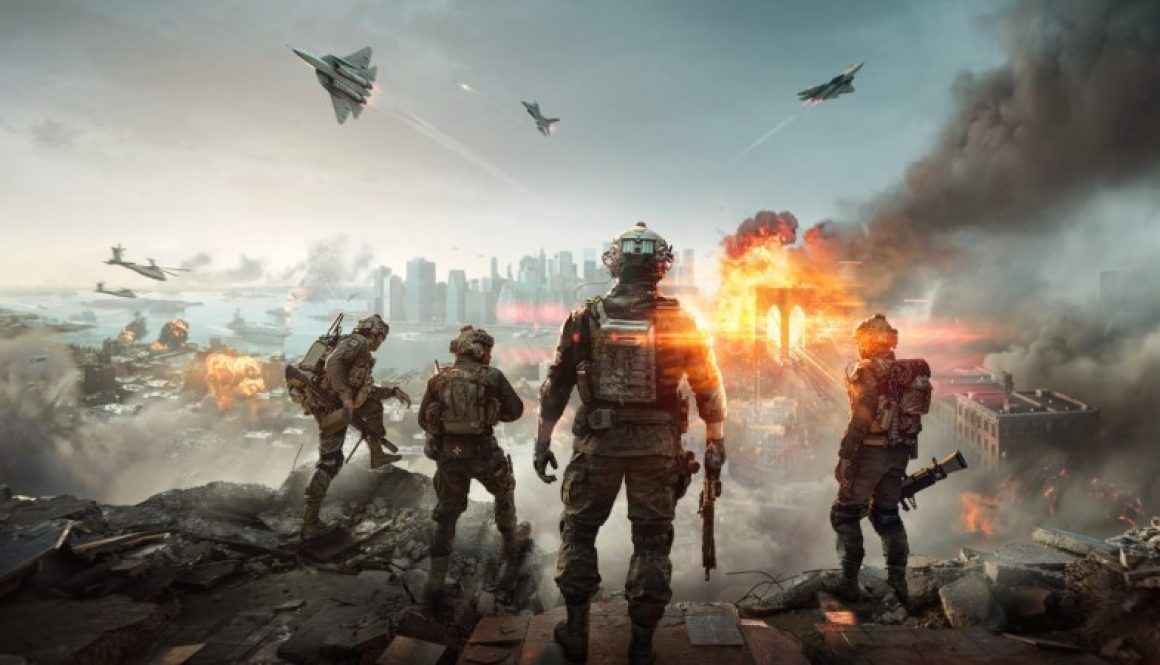
Battlefield 6: How it Compares to Call of Duty, and What Makes it Legendary
Where to download Battlefield 6: Get it on Steam, on PlayStation, and via Epic Games.
Battlefield 6 is the long-awaited next chapter in EA’s iconic military shooter franchise, officially released on October 10, 2025 for PlayStation 5, Xbox Series X/S, and PC. Will Battlefield come to Switch 2? That remains to be seen, but I doubt it (I hope I’m wrong, however).
As the 18th installment in the series, Battlefield 6 carries a lot on its shoulders, and it delivers an “ultimate all-out warfare experience” that truly feels like a return to form for the franchise.
In this blog post, I’ll break down everything you need to know about Battlefield 6: what the game is about, how it sets itself apart from previous titles, why many players (myself included) are buzzing that it might even outshine Call of Duty lately, and other juicy details that fans will appreciate. Let’s dive into the battlefield!
A Globe-Trotting Campaign & Setting
One of the biggest headlines is that Battlefield 6 brings back a full single-player campaign, something fans sorely missed in 2018’s Battlefield V and 2021’s Battlefield 2042. The story is set in the year 2027, against a backdrop of global chaos.
The once-solid NATO alliance is fracturing, and a rogue private military corporation called Pax Armata is seizing power amidst the turmoil. As a player, you step into the boots of “Dagger 13,” an elite squad of U.S. Marine raiders, fighting to stop Pax Armata’s agenda across the world. This campaign spans nine pulse-pounding missions across locations like Brooklyn, Cairo, and beyond, promising “jaw-dropping moments and explosive action on an unparalleled scale”.
In my opinion, it’s exciting to see Battlefield return to a focused narrative, with Battlefield 6 being the first mainline entry since Battlefield 4 to feature a traditional linear story campaign. The developers have hinted at a serious tone inspired by fan-favorite titles Battlefield 3 and 4, so expect a gritty modern war atmosphere rather than the anthology-style vignettes of BF1/BFV or the sparse lore of BF2042.
Personally, I can’t wait to experience the cinematic set pieces (the trailer’s glimpse of collapsing buildings and all-out war gave me chills) and see if Battlefield 6’s story can deliver the same adrenaline rush as its multiplayer.
All-Out Warfare in Multiplayer
Of course, multiplayer is the heart of Battlefield, and Battlefield 6 has more ways to play at launch than any previous entry. DICE and the multi-studio Battlefield Studios team (a collaboration between DICE, Criterion, Ripple Effect, and Motive under EA’s roof) clearly took lessons from Battlefield 2042’s troubled launch and doubled down on what makes Battlefield great. Here’s a quick rundown of what to expect in Battlefield 6 multiplayer:
- Classic Modes Return: The signature large-scale modes Conquest and Breakthrough are back, as well as Rush, delivering that chaotic sandbox warfare Battlefield is known for. You’ll fight on richly detailed, destructive maps from the mountains of Tajikistan to an intense urban battleground under the Manhattan Bridge, to the outskirts of Cairo in a map called New Sobek City, among others. Each map offers “mass destruction on a global scale.” Yes, destruction is back in a big way!
- Escalation Mode: Battlefield 6 introduces a brand-new mode called Escalation, which the devs describe as a fresh “tactical take” on Battlefield gameplay. While details are emerging, Escalation is a twist that joins the classic all-out warfare modes, and I’m eager to see how it shakes up the formula. Additionally, Battlefield 6 includes smaller-scale infantry-focused modes like Team Deathmatch, Squad Deathmatch, Domination, and King of the Hill, but with a Battlefield DNA injection (meaning you still get that trademark destruction and tactical play even in these modes).
- Goodbye Specialists, Hello Classes: One of the most welcome changes (at least for me and many series veterans) is the return of the classic four soldier classes: Assault, Engineer, Support, and Recon. Battlefield 6 moves away from BF2042’s polarizing “specialist” system and brings back the class-based gameplay we loved in older titles.
- Each class has unique roles and gear (for example, Recon players can hold their breath for steadier sniping, Engineers can repair vehicles, etc.), encouraging true teamwork and complementary playstyles. This change really sets Battlefield 6 apart from its predecessor; it feels more like the Battlefield many of us remember, where teamwork is paramount and every role counts.
- As one design director admitted, the 2042 experiment with 128-player chaos “just didn’t catch on,” so Battlefield 6 has wisely scaled matches back to the series-standard 64 players to focus on tighter, more intense battles that players wanted. (Look, bigger isn’t always better, and as a fan, I appreciate that DICE listened when we said 128-player matches often felt too chaotic or empty in 2042.)
- Enhanced Movement and “Tactical Destruction”: Battlefield 6 runs on an updated Frostbite engine and introduces new movement mechanics under what the team calls a “Kinesthetic Combat System.”
- In practice, that means you can now lean around cover, hitch a ride on vehicles (jump onto a tank or truck as a passenger), and even drag downed allies to safety before reviving them. It adds a layer of tactical realism: I love being able to pull a buddy out of the line of fire to revive them, just like an action movie hero! And of course, we have environmental destruction in spades. Inspired by the fan-beloved Bad Company 2, the devs implemented a “Tactical Destruction” system that lets you blow holes in walls and bring down entire buildings for strategic advantage.
- They’ve put some sensible limits in place (no, you can’t reduce every structure to rubble; completely flattening the map is prevented to keep gameplay balanced). But from what I’ve seen, the level of carnage is spectacular…crumbling towers, blasting through houses to flush out enemies. All those “Battlefield moments” are back.
- The team calls it a new tactical take on the series’ trademark awe-inspiring destruction, and it definitely shows. In my experience, no other FPS matches the sheer dynamism of a Battlefield match when the map itself is being blown apart around you.
- Portal is Back and Better: The popular Battlefield Portal mode, introduced in BF2042, returns in Battlefield 6 with improvements. Portal gives players powerful mod tools to create their own experiences. You can mix and match content from past Battlefield games or twist the rules to invent new modes.
- The devs say you can “redraw the lines of battle” and push the series to its limits with custom game types. In other words, it’s sandbox within the sandbox. I’ve always enjoyed hopping into crazy community-made modes (knives-only matches, weird vehicle races, WW2 vs modern army showdowns, you name it).
- With Battlefield 6’s Portal iteration, I expect even more creativity thanks to the new content and destruction systems. It’s like having a Halo Forge or mod toolkit built right in, which massively boosts replayability. If you ever tire of vanilla multiplayer, Portal is there to let you (or creative community members) spice things up.
All told, Battlefield 6’s multiplayer feels like a love letter to longtime fans. It combines the “greatest hits” features of past games (classes, big maps with vehicles, destructibility) with fresh ideas like Escalation mode and new movement mechanics.
The developers have openly said they “set out to raise the series to new heights” with Battlefield 6’s combat, gunplay, and player freedom. From what I’ve played so far (and watched in the beta), I believe them. This is Battlefield firing on all cylinders.
Even the post-launch support is locked and loaded: the first seasonal update (Season 1: Rogue Ops) was already scheduled just a few weeks after launch, bringing new maps and modes for free. That kind of ongoing content plan shows the commitment to keep the community engaged. And as an avid player, I’m here for it.
Key Developers & the Team Behind the Scenes
It’s worth highlighting the folks and studios bringing Battlefield 6 to life, because there are some big industry names here. The game is developed by a group EA calls Battlefield Studios, which is a collaboration of four veteran teams: DICE, Criterion Games, Ripple Effect, and Motive Studio. Together, they pooled their expertise (FPS gameplay, vehicle physics, live service design, etc.) to build this ambitious title. Notably, Vince Zampella, a name Call of Duty fans will recognize as the co-founder of Infinity Ward and later Respawn, took on a leading role overseeing the Battlefield franchise after BF2042.
Under Zampella’s leadership, there was a clear mandate to “go back to the drawing board” and recapture the magic of earlier Battlefield games. He’s even quoted as saying Battlefield 3 and 4 were the “heyday” they drew inspiration from. I’d say that influence is strongly felt in Battlefield 6’s design (which is great news for those of us who adored BF3/BF4!).
Other key figures include Byron Beede, the General Manager of Battlefield at EA, who drove the vision of “the new era of ultimate all-out warfare”. In the launch press release, Beede proudly stated that with Battlefield 6 they aimed for “epic warfare featuring a new tactical take on… awe-inspiring destruction, and the incredible player freedom that has made Battlefield an iconic series”.
Meanwhile, Rebecka Coutaz (GM of DICE) and creative leads like Daniel Berlin and Shashank Uchil (Design Director) were actively engaging with player feedback during development. In fact, the team ran a “Battlefield Labs” playtest program with community members worldwide to gather input as early as February 2025.
They were on Reddit and forums listening to what fans wanted, which is how features like 64-player matches and improved UI made it into the final game after the beta. As a player, it feels refreshing to see devs openly admit past missteps (Uchil even said “sometimes we try stuff and it doesn’t work” referring to 128-player battles) and course-correct based on community sentiment.
On the audiovisual side, Battlefield 6 boasts a score composed by Henry Jackman, a renowned Hollywood composer known for cinematic action (he scored films like Captain America: Civil War. Fitting, since the devs cited that movie’s theme of “ordinary people in extraordinary situations” as inspiration).
The soundtrack definitely amps up the adrenaline and drama in both campaign and multiplayer. And let’s not forget the publisher: Electronic Arts is fully backing Battlefield 6, reportedly with a massive budget of over $400 million, making it one of the most expensive games ever developed.
The result? Production values through the roof, from jaw-dropping graphics and effects to realistic sound design (expect the boom of tank shells and crumbling buildings to rattle your room!).
As a fan, I appreciate knowing that EA threw the kitchen sink at this project, even assembling a dedicated group of studios to focus on Battlefield as a “connected universe” going forward. It signals that Battlefield 6 isn’t just a one-off; it’s the start of a bigger long-term plan for the franchise (which gets me excited for the future too).
Battlefield 6 vs. Call of Duty: How It Stacks Up
No discussion of Battlefield 6 would be complete without addressing the elephant in the room: Call of Duty, its perennial rival in the FPS genre. Both series have huge new releases in late 2025, with Battlefield 6 launching in October, and Activision’s Call of Duty: Black Ops 7 slated for mid-November 2025.
It’s the first time in a few years these two juggernauts are going head-to-head in the fall, which naturally sparks a lot of debate among gamers about which is the better pick. As someone who enjoys both franchises (with differing expectations from each), here’s my take on what sets Battlefield 6 apart and why it’s gaining a favorable buzz versus CoD as of late.
Scale & Gameplay Style: The most obvious difference is scale. Battlefield 6 delivers large, open maps with 64-player battles, vehicles (tanks, jets, helicopters galore), and sprawling objectives. Call of Duty, especially in its core multiplayer (Team Deathmatch, Domination, etc.), is a faster-paced, close-quarters experience with smaller teams.
If you love the “macro” style of gameplay (where teamwork, positioning, and strategy can triumph even if your twitch reflexes aren’t godlike) Battlefield is your game. “In Battlefield, you can make significant contributions to your team even if you’re not the most skilled shooter,” as one veteran player put it.
Spotting enemies, reviving and supplying teammates, repairing vehicles, coordinating an attack; these are meaningful roles in BF6 that earn you points and victories. It’s not uncommon to see a support class or medic top the scoreboard by playing objectives and helping the team. I personally love this aspect: I’m more of a tactical, position-oriented player than a run-and-gun ace, so Battlefield’s more measured pace just clicks for me. Call of Duty, on the other hand, emphasizes individual mechanical skill.
The latest CoDs (like Black Ops 6 in 2024 and the upcoming Black Ops 7 in 2025) have doubled down on “advanced movement” and twitch shooting. Black Ops 6 introduced an omnidirectional sprint/slide system that lets players zip around and bunny-hop like crazy. It’s frenetic and can be thrilling, but if you’re like me, it can also be exhausting!
CoD’s success often “lives or dies by your mechanics and how quickly you snap from target to target”, as one commentator noted. Some players thrive on that reflex test; others prefer Battlefield’s broader scope where smart tactics and teamwork can win the day.
Teamwork & Community: The culture around the games differs too. Battlefield 6 is built for squad play and communication. Every class and vehicle is designed to support others (think of an engineer repairing a teammate’s tank while a sniper spots targets from a hill and an assault soldier captures the flag, it’s symbiotic).
This fosters a sense of camaraderie that I find incredibly rewarding. In contrast, Call of Duty matches often feel like chaotic free-for-alls, where everyone’s basically a lone wolf racking up kills. Sure, modes like Warzone’s battle royale or COD’s objective modes do involve teamwork, but it’s not as deeply baked into the design.
To put it simply: Battlefield is about “us”, Call of Duty is about “me”. Neither is inherently better; it depends on what you enjoy. If coordinating with friends in a combined arms assault gives you a rush, Battlefield 6 will scratch that itch like nothing else.
Destruction & Immersion: Battlefield 6 also prides itself on immersion and realism in a way that recent Call of Duty titles have arguably moved away from.
For instance, Battlefield 6 keeps its soldier costumes and skins grounded in military realism, avoiding the cartoony collaborations and out-of-place operators that have become common in COD’s multiplayer. (No laser guns or hot pink anime skins here; the Battlefield devs explicitly promised to maintain a “gritty realism” in cosmetics and tone.) This is a deliberate contrast to Call of Duty’s current approach, which one article cheekily dubbed COD’s “Fortnite era”: in Black Ops 6, you could run around as characters like a neon-lit anime robot or with wacky celebrity operators.
Activision found big success selling those cosmetics, but at the cost of breaking immersion for some players. As a long-time Battlefield fan, I welcome Battlefield 6’s grounded aesthetic, as it just fits the mood of large-scale modern warfare better. When I’m in Battlefield 6, the atmosphere pulls me in: explosions kick up realistic smoke and dust, buildings crumble, and soldiers look and sound like actual spec-ops troops.
Meanwhile, in recent COD matches, I’ve been shot by Ghostface (from Scream) and Rambo… fun, perhaps, but a bit immersion-shattering! For gamers burned out on that over-the-top vibe, Battlefield 6’s authenticity is a breath of fresh air.
And let’s talk destruction and sandbox moments. I can’t overstate how much this sets Battlefield apart. In Call of Duty, the map is static: a backdrop for the action. In Battlefield 6, the map is part of the action.
You can blow up a bridge to cut off an enemy tank column, collapse a sniper’s perch with RPGs, or call in an airstrike to literally reshape the battlefield. These unscripted, chaotic moments (like a building pancaking a squad, or a well-timed C4 sending a jeep flying) create stories you’ll be telling your friends about for days.
They simply don’t happen in Call of Duty’s arena-style maps. Even Warzone (COD’s battle royale) has limited destruction compared to BF’s level of environmental mayhem. For many of us, this “only in Battlefield” factor is what makes the game so enjoyable and different.
Content & Modes: It’s also interesting to compare content breadth. Call of Duty: Black Ops 6 launched with three pillars (campaign, multiplayer, and the popular Zombies co-op mode) and Black Ops 7 is expected to do similar. Battlefield 6 comes with campaign, multiplayer, and Portal (custom games), and it’s adding its own spin on battle royale soon.
In a surprise (but official) announcement, EA revealed Battlefield 6’s battle royale mode, titled “REDSEC,” which is a free-to-play mode launching shortly after release. This is clearly aimed at competing with Call of Duty’s Warzone, offering that large-scale last-man-standing experience within the Battlefield ecosystem. REDSEC was heavily rumored and leaked, but it’s now confirmed: a trailer was set to drop on October 28, 2025, heralding the mode’s arrival. As a fan of battle royale games, I’m very intrigued to see Battlefield’s take.
Watch Battlefield REDSEC trailer:
The last time DICE attempted BR was “Firestorm” in BFV, which had cool ideas (destructive environments, tanks in a BR) but faltered due to being behind a paywall and lacking support. This time, REDSEC is free-to-play and launching when interest in BF6 is high.
If done right, it could be a huge draw and something that gives Warzone a run for its money. It’s bold moves like this that show Battlefield is not content to sit on the sidelines; they are actively vying for the FPS crown in 2025.
Player Sentiment & “Recency” Favorability: Now, the question of why Battlefield 6 might be more favorable than Call of Duty lately also comes down to player sentiment. Call of Duty is still a juggernaut, don’t get me wrong. Black Ops 6 (2024) was a commercial smash, reportedly achieving the biggest launch weekend sales in COD history and hitting 50 million players by mid-2025.
Those numbers are staggering. However, there’s a sense that CoD has been treading water, relying on formula and flash, whereas Battlefield 6 feels fresh and responsive to what core gamers want.
For example, discourse in the COD community has been increasingly fractured. Fans have been divided over design decisions like the inclusion of outlandish skins, or the handling of game balance. The reveal of Black Ops 7 saw a lukewarm like-to-dislike ratio on YouTube, indicating some skepticism among players.
In contrast, Battlefield 6 has been building positive hype. Early open beta tests for BF6 drew over 500,000 concurrent players on Steam (a huge turnout), and the buzz online has been palpable. At one point after the multiplayer reveal, search interest in Battlefield even overtook Call of Duty…a rare sight!
One gaming outlet noted that shooter fans seem “more interested than usual in what EA has to offer” this year, possibly craving a change of pace from COD’s status quo. There was even a poll by a popular Call of Duty news account where a large majority of respondents (reportedly around 80%) said they were more hyped for Battlefield 6 than for Black Ops 7.
That’s pretty astonishing if you’ve followed the FPS scene. It speaks to Battlefield 6 hitting the right notes pre-launch, and perhaps some fatigue setting in with yearly COD releases.
From my perspective, the current favorability towards Battlefield 6 boils down to this: Battlefield 6 feels like a bold comeback, while Call of Duty is iterating on a formula. Battlefield had something to prove after BF2042’s missteps, and it rose to the challenge by addressing fan feedback (restoring classes, improving polish, offering tons of free post-launch content, and emphasizing its unique strengths).
Meanwhile, Call of Duty, despite high production values, has been TTK (time-to-kill) and twitch-reflex driven for years, and even though Black Ops 6 was excellent in many ways, it didn’t revolutionize the core gameplay.
Black Ops 7 is adding a co-op focused campaign and of course will have its Zombies mode, but it’s still very much the known quantity. One could say COD is like comfort food: reliable, fast, and frenetic, whereas Battlefield 6 is aiming to be a full-course meal of epic proportions. Depending on your taste, you’ll prefer one or the other.
As one journalist wisely concluded after comparing the two: the question isn’t which game is objectively “better,” but which game is better for you. Some folks will always favor the tight, competitive instant gratification of Call of Duty’s matches. And that’s fine! But for a player like me who yearns for those massive combined-arms battles, strategic teamwork, and dynamic, cinematic moments that only Battlefield can provide, Battlefield 6 is the clear winner. It just scratches an itch that COD can’t reach.
Final Thoughts: Why Battlefield 6 Has Me Hooked
Having dug into all the details, I want to wrap up with a bit of personal perspective. Battlefield 6 isn’t just a sequel; it feels like a statement. It’s saying, “Battlefield is back, and this is why you fell in love with it in the first place.”
From the moment I loaded into my first match, I felt that old Battlefield magic return. The gunplay is snappy and satisfying, the sound design is thunderous (every explosion and sniper crack gave me goosebumps), and the maps are both gorgeous and intelligently designed to funnel conflict in interesting ways (urban choke points, open fields for vehicle play, verticality in high-rise buildings, you name it).
I find myself constantly in awe of the “Battlefield moments” that Battlefield 6 delivers. In one round, I was pinned down by a tank shelling a building, so I called in an airstrike gadget I’d earned, laser-designated the tank, and watched as a jet from my squad swooped in to bomb it, debris flying everywhere. In another match, my squad and I coordinated: I drove an ATV loaded with C4 right into an enemy convoy (hopping off at the last second), while my friend detonated it remotely. It was a spectacular double-kill that shook the ground and had us whooping on voice chat.
These unscripted, chaotic scenarios are the stuff of Battlefield legend, and they happen constantly in BF6 thanks to the emphasis on player freedom and sandbox systems. No two matches feel the same, and that’s the secret sauce that keeps me coming back for hundreds of hours.
Critically, Battlefield 6 is also delivering on promises. Reviews from many outlets came in “generally favorable”, noting that it’s a strong comeback from the previous game. (It earned around 83/100 on Metacritic for PS5/PC, which is quite solid, and anecdotally, most players in the community seem happy with the direction).
Even commercially, it’s off to a record-breaking start: within days of launch, EA announced Battlefield 6 sold over 7 million copies in its first 3 days, making it the biggest launch in Battlefield series history. That’s huge! For context, it means BF6 is selling at Call of Duty-like speeds: a sign that gamers’ enthusiasm translated into real momentum. I think this success is well-deserved.
From a first-person point of view, I’ll admit I’m a long-time Battlefield fan, but I’m not a blind loyalist. Battlefield 2042, for instance, left me pretty disappointed at launch. With Battlefield 6, though, I genuinely feel the franchise has found its footing again. It’s the perfect blend of classic and new.
The return of the class system and more grounded tone shows respect for Battlefield’s roots, while the new modes, modern storytelling, and quality-of-life improvements show the series isn’t stuck in the past either. And importantly, the game is just fun.
Whether I’m flying a helicopter with a gunner buddy raining down fire, or sneaking around as Recon spotting enemies for my team, or even messing around in Portal with silly custom modes, I’m having a blast. Battlefield 6 provides those “wow” moments and epic stories that I can’t wait to share on my blog and with friends (expect plenty of video clips of my escapades!).
Is Battlefield 6 “better” than the latest Call of Duty? Honestly, as we explored, that depends on what you want from an FPS. But I’ll say this: Battlefield 6 has completely rekindled my love for the franchise, and it’s currently my top pick for a multiplayer shooter this year.
If you’re someone who craves massive battles, true teamwork, and a mix of tactical play and cinematic chaos, then I highly recommend giving it a shot. And hey, you don’t even have to abandon Call of Duty entirely, as there’s plenty of room to enjoy both for their own merits. In the end, we gamers are spoiled for choice in 2025, and Battlefield 6 is a standout choice indeed.
Battlefield 6 has arrived, and it truly feels like the dawn of a new all-out warfare era. Now if you’ll excuse me, there’s an attack helicopter with my name on it. Time to join the fight.
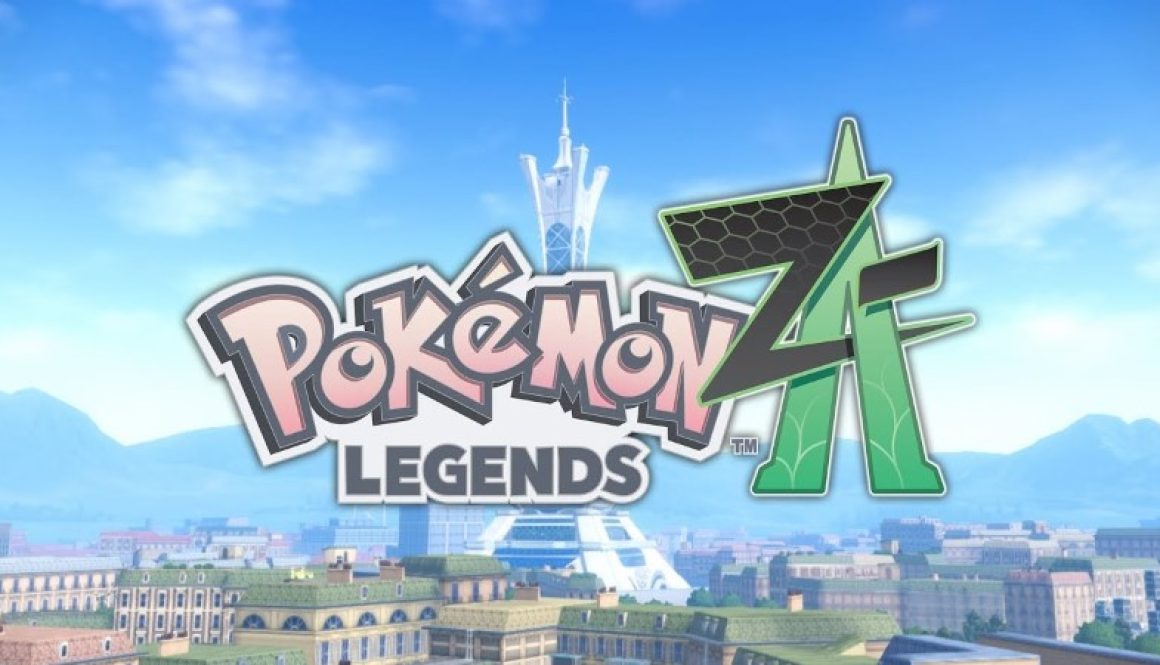
Pokémon Legends Z-A: A Bold New Pokémon Catches Switch 2 Players’ Hearts
Where to download Pokemon Legends Z-A: From the official Nintendo store (Switch 1 and Switch 2; physically and digitally)
For Pokémon fans, 2025 has delivered a landmark new adventure: Pokémon Legends: Z-A. Released worldwide on October 16, 2025, this action RPG by Game Freak invites players back to the Kalos region in a whole new way. It’s the second game in the Pokémon Legends sub-series (following 2022’s Pokémon Legends: Arceus) and serves as a sequel to the classic Pokémon X and Y games.
Even more exciting, Legends: Z-A launched on both the Nintendo Switch and the new Nintendo Switch 2 consoles, making it one of the first Pokémon titles to span two generations of hardware. In this blog post, we’ll dive into everything this new game offers: what it’s about, how it breaks the mold of past Pokémon games, and why fans are absolutely loving it.
Gameplay Innovations: Real-Time Battles & More
One of the biggest talking points about Pokémon Legends: Z-A is how dramatically it shakes up the traditional Pokémon gameplay formula. This isn’t your typical turn-based Pokémon battle affair. Legends: Z-A introduces real-time combat for the first time in the series, fundamentally changing how battles feel. Instead of selecting moves from static menus while time stands still, here you directly control your Trainer and Pokémon in battle, moving around and timing your attacks on the fly.
The result is a faster-paced, action-oriented experience that many players say makes them feel like they’ve “stepped into an episode of the anime”. Longtime fans (even those who grew up loving turn-based battles) have found the new system surprisingly immersive; one critic noted that the real-time battling offers an unrivaled level of immersion within the series.
To highlight what sets Legends: Z-A apart, here are some of its key features and gameplay changes:
- Real-Time Battles: Legends Z-A does away with traditional turn-based combat. Trainers and Pokémon move freely and attack in real time (no taking turns!), so positioning and timing matter a lot. You issue commands with button presses, and moves have cooldowns and area-of-effect, adding a strategic, almost action-RPG layer to fights. This “no turns” approach is a first for the mainline Pokémon RPGs and completely rewires how you think about battles.
- Urban Setting in Lumiose City: Uniquely, the entire game is set within Lumiose City, the bustling metropolis of the Kalos region (inspired by Paris) that fans first saw in Pokémon X and Y. Thanks to an urban redevelopment initiative in the story, Lumiose now features a mix of lush parks and high-tech facilities. Rather than journeying across an entire region, you’ll explore different districts of this one massive city, from its streets and shops to special “wild zones” where Pokémon roam free amid the urban landscape. This single-city focus is a big departure from previous games’ sprawling region adventures, giving Z-A a more concentrated but dense world to explore.
- Starter Pokémon from Multiple Generations: At the start of your adventure, you’ll get to choose from three partner Pokémon that span different generations: Chikorita, Totodile, or Tepig. These Grass, Water, and Fire-type starters originally hail from Pokémon Gold/Silver (Johto) and Pokémon Black/White (Unova) instead of Kalos’ own starters, which is a fun twist. Whichever you choose, your first partner will help you navigate Lumiose’s challenges…and yes, character customization is back too, so you can style your Trainer with more options than ever before.
- Z-A Royale (Ranked Tournament): The core storyline revolves around the Z-A Royale, a citywide competition that takes place each night in special Battle Zones. Think of it as a battle royale or tournament among Pokémon Trainers in Lumiose City. Starting at rank Z, you fight to climb all the way up to rank A, battling tougher opponents at each tier. If you manage to reach Rank A, legend has it you’ll have a wish granted: a hook that certainly adds motivation! During these nighttime battles, you can even ambush other trainers by sneaking up on them for a pre-emptive strike, just as they can try to ambush you. It’s a satisfying (if a bit cheeky) mechanic that brings a new stealth element to Trainer fights.
- Mega Evolution Returns: Pokémon X and Y introduced Mega Evolutions, and Legends: Z-A brings them back in a big way. Early on, you obtain a Mega Ring and can find Mega Stones; during battles, dealing damage fills a gauge that lets you temporarily Mega Evolve your Pokémon for a power boost. The game includes 27 Mega-Evolved forms, including some new surprises like a Mega Dragonite, and even wild “rogue” Mega-Evolved Pokémon that appear as boss encounters. Mega Evolution isn’t just a gimmick here; it can be the key to overcoming tough challenges, and both you and AI opponents will use it strategically in high-stakes battles.
- Wild Zones & Rogue Pokémon: Lumiose City might be urban, but it has designated Wild Zones (areas where Pokémon live freely amidst the city). These function a bit like the open areas in Pokémon Legends: Arceus; you can catch and battle wild Pokémon to build your team, and sometimes you’ll stumble on especially powerful Alpha variants or the aforementioned Rogue Mega-Evolved Pokémon acting as mini-bosses. In a neat twist, if you accidentally KO a wild Pokémon in these zones with your fast-paced attacks, the game often still lets you attempt to catch it afterward (so you’re not punished for using a strong move by mistake). Quelling these rampaging Mega Pokémon also ties into the story, adding intense boss fights that require skillful dodging (yes, your Trainer might need to dodge-roll away from attacks!) and the right strategy to take them down.
- Multiplayer and Online Features: Legends: Z-A isn’t purely a solo experience. It offers a Battle Club multiplayer mode where up to 4 players can join in. You can team up in co-op Link Battles to defeat as many Pokémon as possible within a time limit, or face off in competitive Ranked Battles against other players to earn rank points. It’s a fun way to test your team and skills against friends or the world. Of course, trading and battling with others online is supported as usual, and there are even limited-time events (like special boss raids or challenges) that keep the city lively.
All these features come together to make the gameplay of Pokémon Legends: Z-A feel fresh and exciting. The shift to real-time combat in particular is a game-changer, as battles now demand quick reflexes and careful thinking about move timing and positioning, rather than just selecting the most powerful move each turn. It’s a bold experiment for the franchise, and one that seems to be paying off with fans who were craving something new.
Setting and Story: A New Adventure in Lumiose City
The story of Pokémon Legends: Z-A takes us back to Kalos, but not as we remember it from a decade ago. The game is set five years after the events of Pokémon X and Y, focusing entirely on Lumiose City, Kalos’s famous capital. In the aftermath of the showdown with Team Flare in the old games, Lumiose has undergone a major urban renewal project.
The city is being transformed by a company called Quasartico Inc., creating those wild zones where Pokémon can live alongside humans within the city. For players, this means Lumiose City is your playground. And it’s not just a backdrop, but practically its own world filled with different neighborhoods, alleyways, rooftops, and secrets to explore.
What’s the premise? You arrive in Lumiose as a newcomer drawn into the Z-A Royale tournament, a competition that pits trainers against each other nightly, all vying to rise from Rank Z to Rank A. By day, you’ll be preparing: exploring the city, catching and training Pokémon in the wild zones, and helping out locals.
By night, the city’s Battle Zones activate, and the streets turn into dynamic battlefields for the tournament. The tournament’s prize (for reaching Rank A) is said to be a granted wish, which naturally attracts all sorts of talented and eccentric trainers to Lumiose.
It’s a fun twist on the usual Pokémon journe. So instead of the traditional Gym Leader challenge or island trial, you have an underground tournament ladder as the main test of your skills.
As you climb the ranks, Legends: Z-A weaves in a storyline that will delight long-time Pokémon fans. You’ll encounter familiar faces from Kalos lore and unravel a mystery involving the resurgence of Mega Evolution energy. Notably, the character AZ (the immortal king from X and Y’s story) makes a return, now as the enigmatic owner of Hotel Z in Lumiose. His presence (and even the game’s title “Z-A”) hints that there’s more to this competition than meets the eye. Indeed, the legendary Pokémon Zygarde (which X and Y players will remember as the guardian of Kalos’s ecosystem) takes a keen interest in your progress.
There’s a mysterious phenomenon occurring where wild Pokémon in the city are suddenly Mega Evolving on their own and going berserk, posing a threat to the city’s peace. Part of your adventure will involve investigating and quelling these “Rogue” Mega-Evolved Pokémon crises, adding an almost superhero-like element to the story as you protect Lumiose from rampaging creatures.
Without spoiling too much, the narrative cleverly ties back to events of Pokémon X and Y. Fans who remember the ultimate weapon incident and the sorrowful story of AZ and his Floette will find some intriguing connections and resolutions here.
The game strikes a balance between nostalgia and new plotlines: you get answers to some lingering Kalos mysteries, and you get all-new characters (like your friendly rival/guides, Taunie or Urbain, and the scientists of Quasartico) to meet.
The atmosphere in Lumiose City shifts between bright, hopeful days and tense, battle-filled nights, giving the story a dynamic feel. By the time you reach the climax, you’ll have battled old foes, discovered the truth behind the Z-A Royale, and maybe even caught some legendary Pokémon along the way.
It’s a more contained story than the globe-trotting epics of recent mainline titles, but that tighter focus allows for deeper exploration of Lumiose’s lore and inhabitants.
Breaking the Pokémon Mold
So, how does Pokémon Legends: Z-A set itself apart from previous Pokémon games? In many ways, it feels like Game Freak took some of the experimental spirit of Legends: Arceus and pushed it even further. For one, the setting constrained to a single city is unprecedented. Past games typically send you on a regional journey through multiple towns and routes, but Z-A proves you can tell a rich Pokémon story in one location.
This change gives the game a very different pace and vibe; Lumiose City in Z-A almost feels like the main character itself, changing over time and offering new surprises as you unlock more areas. Some players have described it as Pokémon meets an open-world city RPG, as opposed to the wild countryside adventuring of something like Pokémon Scarlet & Violet. It’s certainly a new flavor for the franchise, and it makes returning to Kalos feel fresh.
The gameplay differences are even more striking. Traditionally, Pokémon battles have always been turn-based; even Legends: Arceus, while adding action elements in the overworld, stuck to a modified turn-based system when you actually entered combat.
Legends: Z-A, by contrast, goes full action-RPG in its battles. This means Pokémon combat now shares similarities with games like Final Fantasy VII Remake or Tales of series, where you control movements and attacks in real time, while still maintaining the core Pokémon mechanics of types, moves, and status effects. It’s a bold pivot that modernizes the feel of battles, and many fans find it thrilling.
You actually dodge enemy attacks, line up area-of-effect moves, and have to think on your feet. It’s worth noting that this shift might not be for everyone, as some Pokémon purists prefer the chess-like strategy of turn-based fights, but Z-A demonstrates that real-time battles can work in Pokémon, and work well, without losing the essence of what makes Pokémon battles fun.
Another big way Z-A breaks the mold is by bringing back Mega Evolutions and making them central. In recent years, the main series moved on to other gimmicks (Z-Moves in Alola, Dynamax/Gigantamax in Galar, etc.), leaving Mega Evolution somewhat by the wayside.
Legends: Z-A not only revives Mega Evolution, but doubles down with new Mega forms and integral story and gameplay usage. This has been a hit with fans who missed seeing their favorite Pokémon Mega Evolve (the moment you finally unlock Mega Evolution in the game feels epic, and suddenly getting to Mega Evolve, say, a Dragonite or other non-Gen6 Pokémon is a delight for longtime players).
All of these changes… the real-time combat, single-city exploration, tournament storyline, and return of Mega Evolution, make Pokémon Legends: Z-A feel very different from, say, a classic title like Pokémon Red/Blue or even newer ones like Sword/Shield.
Yet, it’s not different just for the sake of it; these innovations serve a purpose: to tell a more personal, focused story and to inject new life into the Pokémon formula. If Legends: Arceus was our first taste that Pokémon could successfully break conventions (by going semi-open-world and shifting the emphasis to catching), then Legends: Z-A confirms that the franchise still has plenty of room to evolve in gameplay.
As one reviewer put it, where Z-A experiments with the Pokémon formula, it succeeds in delivering a novel experience, hopefully encouraging Game Freak to continue challenging what Pokémon games can be.
Reception and Why Fans Love It
Ever since its release, Pokémon Legends: Z-A has been met with enthusiasm from players and solid praise from critics. On aggregate, the game earned “generally favorable” reviews. For instance, the Nintendo Switch 2 version sits around a 78/100 on Metacritic, indicating broadly positive critical feedback.
Many reviewers highlighted the fresh battle system as a standout success. IGN scored the game 8/10, and outlets like GamesRadar+ and VG247 gave it 4/5, applauding the way Z-A reinvents battles while maintaining that Pokémon charm. In fact, on OpenCritic, Legends: Z-A garnered a “Strong” recommendation rating from a majority of reviewers, which is a good sign that it’s hitting the right notes.
What exactly do people love about Legends: Z-A? From the critical side, the battle system is a huge win. Reviewers have gushed about how engaging and immersive the real-time battles are; a common sentiment is that it makes you feel more like a true Pokémon Trainer than ever before.
Timing a dodge or landing a perfectly aimed move in real time provides little adrenaline rushes that simply don’t exist in the old turn-based format. Players have also praised the game’s strategic depth; since moves can have cooldowns and you need to consider when to Mega Evolve or swap Pokémon mid-fight, there’s a satisfying learning curve to mastering the mechanics.
It’s still approachable for new players, but if you’re a veteran, you’ll appreciate that the game encourages you to use a wider variety of moves and tactics (I found myself using status moves and buffs way more than I did in past games, for example, because timing and synergies became crucial).
Another widely appreciated aspect is the nostalgia factor and storytelling. Kalos has a special place in many fans’ hearts, and seeing Lumiose City reborn and bustling in Z-A is a treat. The game brings back music motifs and lore from X/Y, which tugs the heartstrings of those who remember the Kalos adventures.
Meeting AZ again, and uncovering the fate of certain characters or the aftermath of Team Flare’s actions, gives a sense of closure and continuity that the main series never fully provided for Kalos. Fans have been delighted to finally get a proper sequel of sorts to Pokémon X/Y, which is something many have dreamt of (there were jokes for years about wanting a “Pokémon Z” version, and in a way Z-A scratches that itch).
On top of that, Z-A’s new characters and side stories have been well-received; folks enjoy the quirky city residents and the various side quests that flesh out daily life in Lumiose, from helping a chef gather ingredients Pokémon have stolen, to aiding a detective agency run by a familiar face from the Kalos region’s past. The world feels lively and full of small stories, which makes players want to spend more time in Lumiose even after finishing the main plot.
It’s Not All Rainbows and Roses, Though
Of course, not everything about Pokémon Legends: Z-A is universally adored. Some criticisms have popped up in reviews and fan discussions. The graphics and visuals have been a point of contention, while the game runs smoothly (especially on Switch 2) and avoids the technical glitches that plagued Scarlet/Violet, a few critics felt that the visual presentation was a bit underwhelming or “lifeless” in places.
Lumiose City has a lot of gray concrete, and despite the neon signs at night, the art direction can appear flat. Essentially, the game’s scope might have stretched the aging Switch hardware, and even with improvements on Switch 2, this isn’t a Zelda: Tears of the Kingdom-level showcase.
Additionally, the decision to confine the game to one city, while bold, means you don’t get the environmental variety (mountains, forests, oceans, etc.) that other Pokémon titles offer, as some players missed that sense of wide exploration. One reviewer from Nintendo Life praised the battles and performance but openly wished Lumiose had a bit more visual pop and that the single-city setting didn’t feel so restrictive and repetitive after dozens of hours.
There were also a few storyline and design nitpicks. For example, the tournament structure of the Z-A Royale is thrilling at first, but a couple of critics noted that as the story progresses, the game sometimes speeds you through the ranks in a scripted way, rather than making you earn every rank through gameplay.
This was seen as a missed opportunity to fully embrace the tournament arc (though it certainly keeps the narrative moving briskly). The stealth ambush mechanic in battles, while fun, can be a bit clunky. You might think you snuck up on an NPC, only for the game to decide you didn’t, which can lead to some cheap shots (thankfully, these instances are rare and not too punishing).
And in true Pokémon fashion, there’s still no voice acting at all, which stands out nowadays and can make story scenes feel less dynamic…something fans continue to debate, though by now many have just accepted it as Game Freak’s style.
Despite these quibbles, the overall reception has been very positive. Players on forums and social media are celebrating Legends: Z-A for daring to try new things. It’s become common to see folks swapping tips on real-time battle strategies or sharing clips of their clutch Mega Evolution moments during tough boss fights.
The consensus among many long-time fans is that Z-A “might be the most fun I’ve had with Pokémon in years,” thanks to how fresh it feels. Importantly, the game seems to have bridged the gap between casual players and hardcore fans nicely – it’s accessible and familiar enough for anyone who’s played Pokémon before, but it introduces enough new mechanics to give veterans a challenge and something new to master.
In an era where some feared the Pokémon formula was becoming stale, Pokémon Legends: Z-A has injected a much-needed jolt of excitement into the franchise.
Sales, Platforms, and the Switch 2 Launch
From a commercial standpoint, Pokémon Legends: Z-A has been a major success right out of the gate.
Within its first week on sale, it sold over 5.8 million copies worldwide, which is a huge number that solidifies it as one of the strongest Pokémon spin-off (or sub-series) launches. In Japan alone, Z-A moved about 1.48 million units in its first four days, and interestingly, the sales were split across two platforms, with the Switch version and Switch 2 version taking the top two spots on the charts simultaneously.
That’s right, Pokémon Legends: Z-A is available on both the original Nintendo Switch and the new Nintendo Switch 2. This cross-generation release strategy is somewhat new for Pokémon, and it coincided with Nintendo’s rollout of the upgraded Switch 2 hardware in late 2025.
For those curious, the Nintendo Switch 2 edition of the game offers some nice enhancements. On Switch 2, Legends: Z-A boasts improved graphics and more stable frame rates (especially in handheld mode, the performance boost is noticeable).
The game was developed with the original Switch in mind first, but the devs later announced an enhanced port to take advantage of the Switch 2’s beefier specs. If you already had the game on Switch and then got a Switch 2, Nintendo even provided an “Upgrade Pack” option to boost your game to the enhanced version without buying a whole new copy.
It’s great to see that level of support; effectively, it ensured that early adopters of the new console had a marquee Pokémon title to play at launch, while existing Switch players weren’t left out.
And in case you’re wondering: yes, the Switch 2 edition is fully compatible with the original Switch (you can actually play the Switch 2 version on a regular Switch, it just won’t have the extra graphical bells and whistles).
This dual-release approach might be a glimpse of how Nintendo handles the transition to its new generation, and Legends: Z-A ended up being a showcase title for that.
The sales momentum reflects not just clever platform strategy but genuine hype and word-of-mouth for the game. It’s notable that Z-A hit those high sales despite releasing in October (not even a holiday season yet) clearly, the Pokémon brand plus the intrigue of a new kind of gameplay pulled in huge crowds.
Review scores in the high 7s, 8s, and above certainly helped convince folks that this wasn’t a gimmick spin-off but a must-play title for fans. Moreover, being part of Generation IX of Pokémon (the same generation as Scarlet/Violet) gave it a kind of mainline importance in fans’ eyes. Post-launch, Nintendo and The Pokémon Company have been actively supporting the game with updates and events.
They even announced a significant DLC expansion, titled Pokémon Legends: Z-A Mega Dimension, scheduled for release in February 2026. This upcoming DLC is expected to add new areas of Lumiose (perhaps opening up previously inaccessible districts or even underground/sewers?), new missions, and additional Pokémon (we might see even more Mega Evolutions or perhaps Kalos region legendaries making appearances).
The promise of DLC has certainly kept interest high,as fans are speculating like crazy about what could be included, from new Mega forms to maybe a post-game story featuring characters like Looker or Emma (two beloved Kalos characters).
All told, the strong sales and ongoing content support suggest that Pokémon Legends: Z-A is not just a one-off experiment but potentially the start of something bigger. It wouldn’t be surprising to see the Pokémon Legends sub-series continue in the future (who knows, Legends: Z-A might someday be followed by Legends: ??? exploring another region’s lore in a novel way).
For now, Z-A is firmly established as a hit both critically and commercially, and it’s clear that players are eager for more adventures that think outside the usual box.
Final Thoughts
Pokémon Legends: Z-A is, in many ways, a love letter to Pokémon fans that also manages to push the franchise forward. It dares to ask: what if Pokémon, but different? And it answers with an experience that feels both refreshingly new and comfortingly familiar.
As a fan who’s played since the ’90s, I found myself grinning at all the little callbacks to Kalos and the clever ways the story tied into past events, and at the same time, I was sitting on the edge of my seat learning to dodge-roll away from a wild Mega Gyarados trying to flatten me in real time. That combination of nostalgia and innovation is what makes Legends: Z-A something special.
If you’ve been on the fence because it’s not a traditional Pokémon title, I’d say give it a shot, because it might surprise you. The game manages to maintain the core appeal of Pokémon (collecting creatures, battling, exploring a vibrant world) while stripping away some old constraints and adding new layers of fun.
And if you’re a die-hard who’s grown up with the series, Z-A will remind you why you fell in love with Pokémon in the first place, and show you a glimpse of what the future of the series could be. It’s been a long time since a Pokémon game sparked this much conversation about its mechanics and story directions; that alone is an exciting sign.
In the end, the overwhelming community sentiment is that Pokémon Legends: Z-A is a triumph; not a perfect game, but a bold step in the right direction. It’s a game that respects the player’s nostalgia but isn’t afraid to do something completely different.
Whether you’re here for the intense new battle style, the Kalos region fan-service, or just to catch ’em all in a new setting, Legends: Z-A delivers an adventure that’s well worth taking.
As the sales numbers show, millions of Trainers are already exploring Lumiose City’s streets and having a blast. So grab your Mega Ring, pick your starter, and get ready. When night falls in Lumiose, there’s a Z-A Royale waiting, and it’s unlike any Pokémon battle you’ve experienced before.

